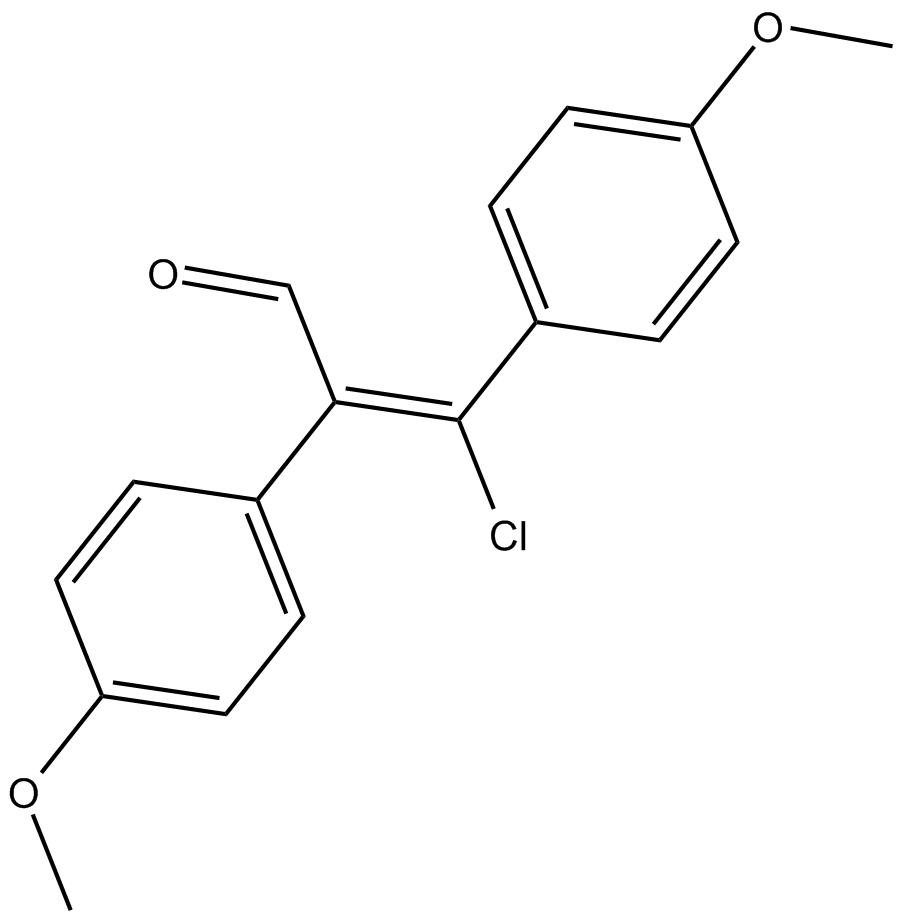Wnt/β-catenin
β-catenin is a dual function protein, regulating the coordination of cell–cell adhesion and gene transcription. In humans, the CTNNB1 protein is encoded by the CTNNB1 gene. β-catenin is a subunit of the cadherin protein complex and acts as an intracellular signal transducer in the Wnt signaling pathway. It is a member of the catenin protein family and homologous to γ-catenin. Mutations and overexpression of β-catenin are associated with many cancers, including hepatocellular carcinoma, colorectal carcinoma, lung cancer,malignant breast tumors, ovarian and endometrial cancer. β-catenin is regulated and destroyed by the beta-catenin destruction complex, and in particular by the adenomatous polyposis coli (APC) protein, encoded by the tumour-suppressing APC gene. Therefore genetic mutation of the APC gene is also strongly linked to cancers, and in particular colorectal cancer resulting from familial adenomatous polyposis (FAP).
Products for Wnt/β-catenin
- Cat.No. Product Name Information
-
GC62432
β-catenin-IN-2
β-catenin-IN-2 is a potent β-catenin inhibitor, compound H1B1, extracted from patent US20150374662A1. β-catenin-IN-2 can be used for the study of colorectal cancer.
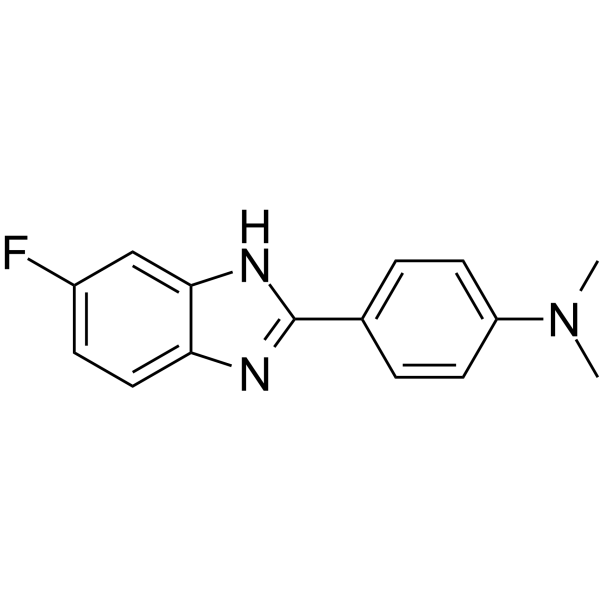
-
GC34980
(E)-Ferulic acid
(E)-Ferulic acid is a isomer of Ferulic acid which is an aromatic compound, abundant in plant cell walls. (E)-Ferulic acid causes the phosphorylation of β-catenin, resulting in proteasomal degradation of β-catenin and increases the expression of pro-apoptotic factor Bax and decreases the expression of pro-survival factor survivin. (E)-Ferulic acid shows a potent ability to remove reactive oxygen species (ROS) and inhibits lipid peroxidation. (E)-Ferulic acid exerts both anti-proliferation and anti-migration effects in the human lung cancer cell line H1299.
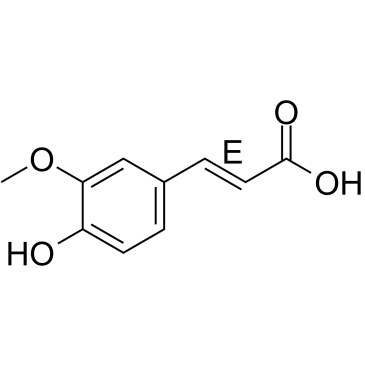
-
GC66371
(E)-Ferulic acid-d3
(E)-Ferulic acid-d3 ((E)-Coniferic acid-d3) is the deuterium labeled (E)-Ferulic acid. (E)-Ferulic acid is a isomer of Ferulic acid which is an aromatic compound, abundant in plant cell walls. (E)-Ferulic acid causes the phosphorylation of β-catenin, resulting in proteasomal degradation of β-catenin and increases the expression of pro-apoptotic factor Bax and decreases the expression of pro-survival factor survivin. (E)-Ferulic acid shows a potent ability to remove reactive oxygen species (ROS) and inhibits lipid peroxidation. (E)-Ferulic acid exerts both anti-proliferation and anti-migration effects in the human lung cancer cell line H1299.
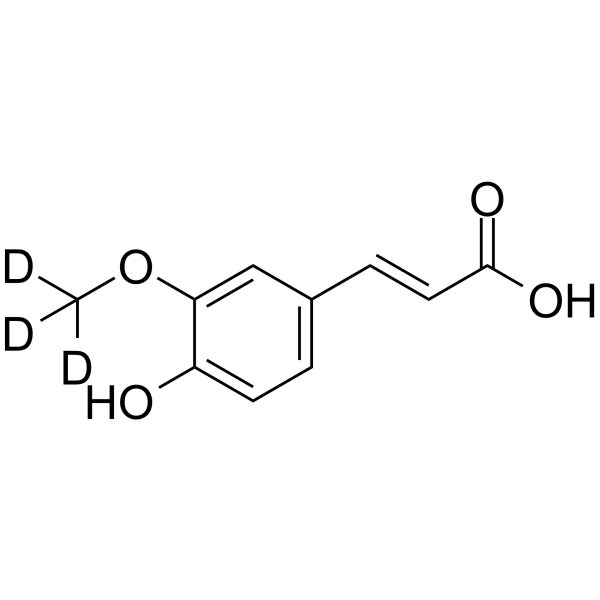
-
GC45354
4β-Hydroxywithanolide E
A withanolide with anti-inflammatory and anticancer activities

-
GC42669
ABC99
An inhibitor of NOTUM

-
GC31663
Adavivint (SM04690)
Adavivint (SM04690) (SM04690; Lorecivivint) is a potent and selective inhibitor of canonical Wnt signaling, with an EC50 of 19.5 nM via a high-throughput TCF/LEF-reporter assay in SW480 colon cancer cells.
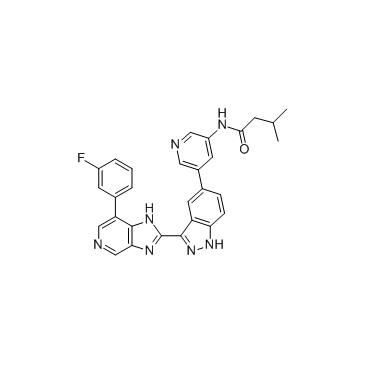
-
GC50323
AMBMP hydrochloride
AMBMP hydrochloride is a potent and cell-permeable Wnt signaling activator. BML-284 induces TCF-dependent transcriptional activity with an EC50of 700 nM.
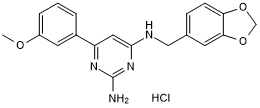
-
GC65165
Carboxylesterase-IN-2
Carboxylesterase-IN-2 (compound 4u) is a potent inhibitor of Carboxylesterase Notum with an IC50 less than or equal to 10 nM. Notum is a negative regulator of Wnt signaling acting through the hydrolysis of a palmitoleoylate ester, which is required for Wnt activity. Carboxylesterase-IN-2 has the potential for the research of cancer disease.
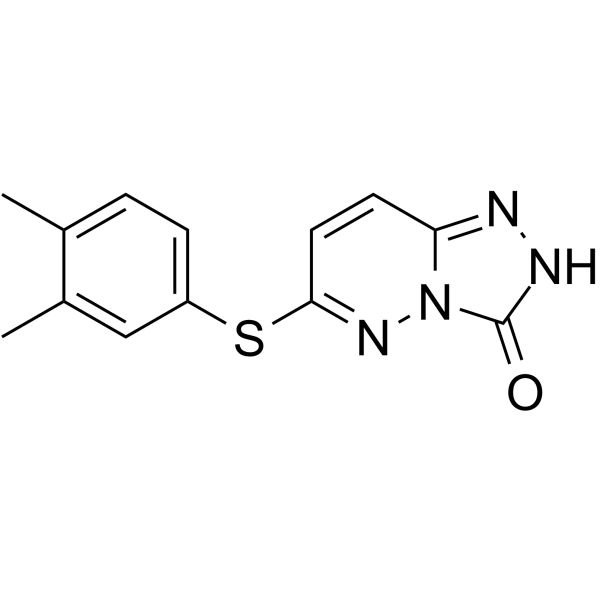
-
GC65167
Carboxylesterase-IN-3
Carboxylesterase-IN-3 (compound 4y) is a potent inhibitor of Carboxylesterase Notum with an IC50 less than or equal to 10 nM. Notum is a negative regulator of Wnt signaling acting through the hydrolysis of a palmitoleoylate ester, which is required for Wnt activity. Carboxylesterase-IN-3 has the potential for the research of cancer disease.
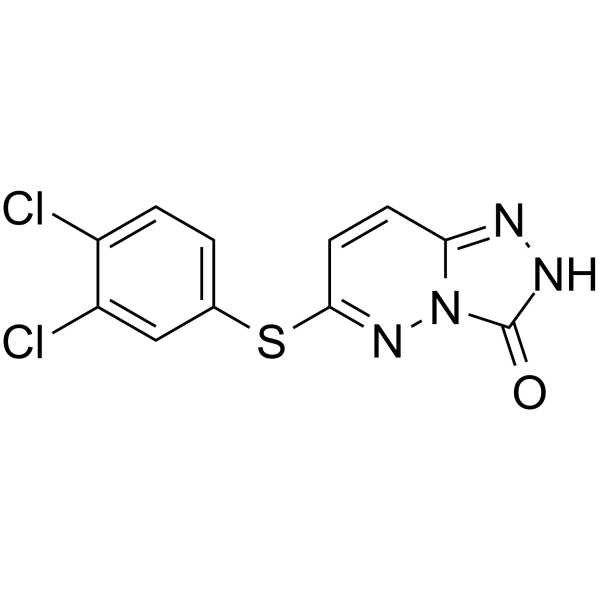
-
GC17840
Cardiogenol C hydrochloride
Induces differentiation of mouse embryonic stem cells (ESCs) into cardiomyocytes
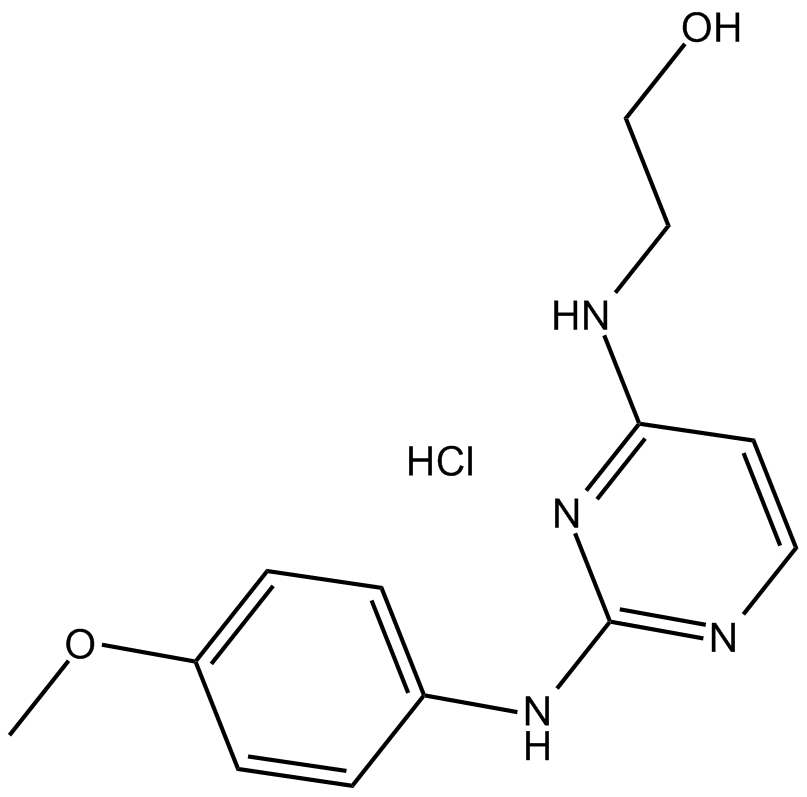
-
GC17782
Cardionogen 1
Wnt signaling modulator
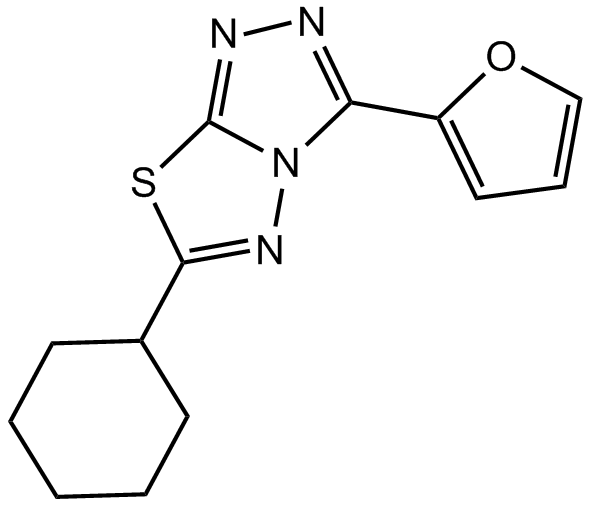
-
GC10253
CCT 031374 hydrobromide
inhibits TCF-dependent transcription, blocks BIO-induced β-catenin stabilization
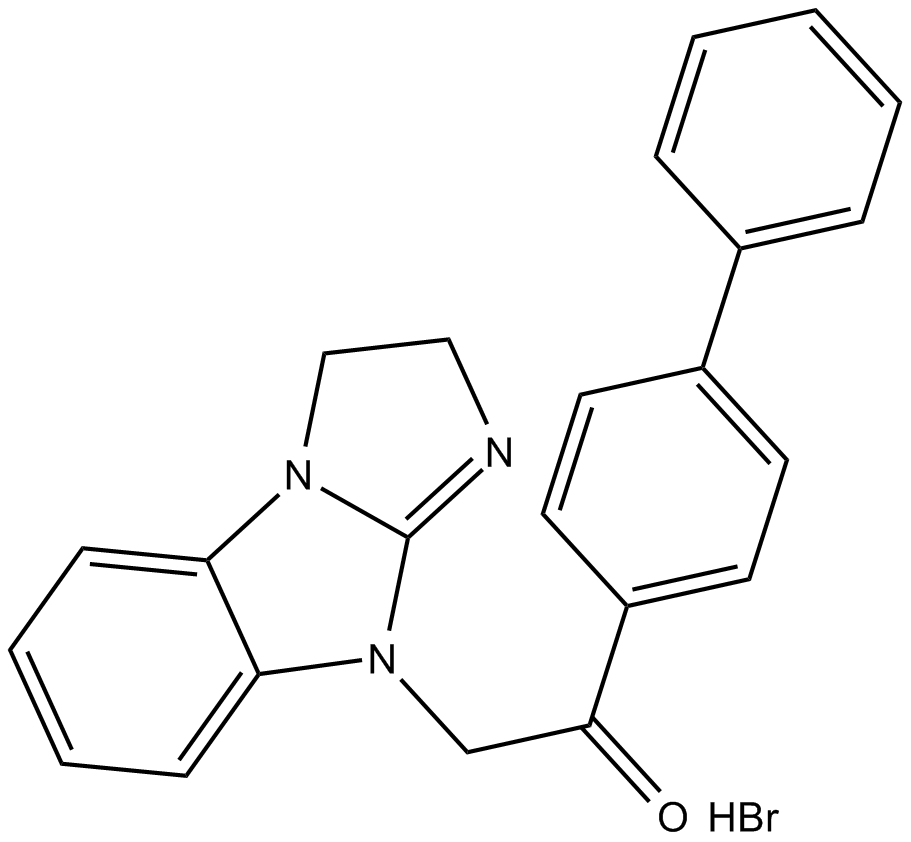
-
GC17606
CCT251545
Orally bioavailable and potent WNT signaling inhibitor

-
GC16702
CHIR-99021 (CT99021)
A selective GSK3 inhibitor
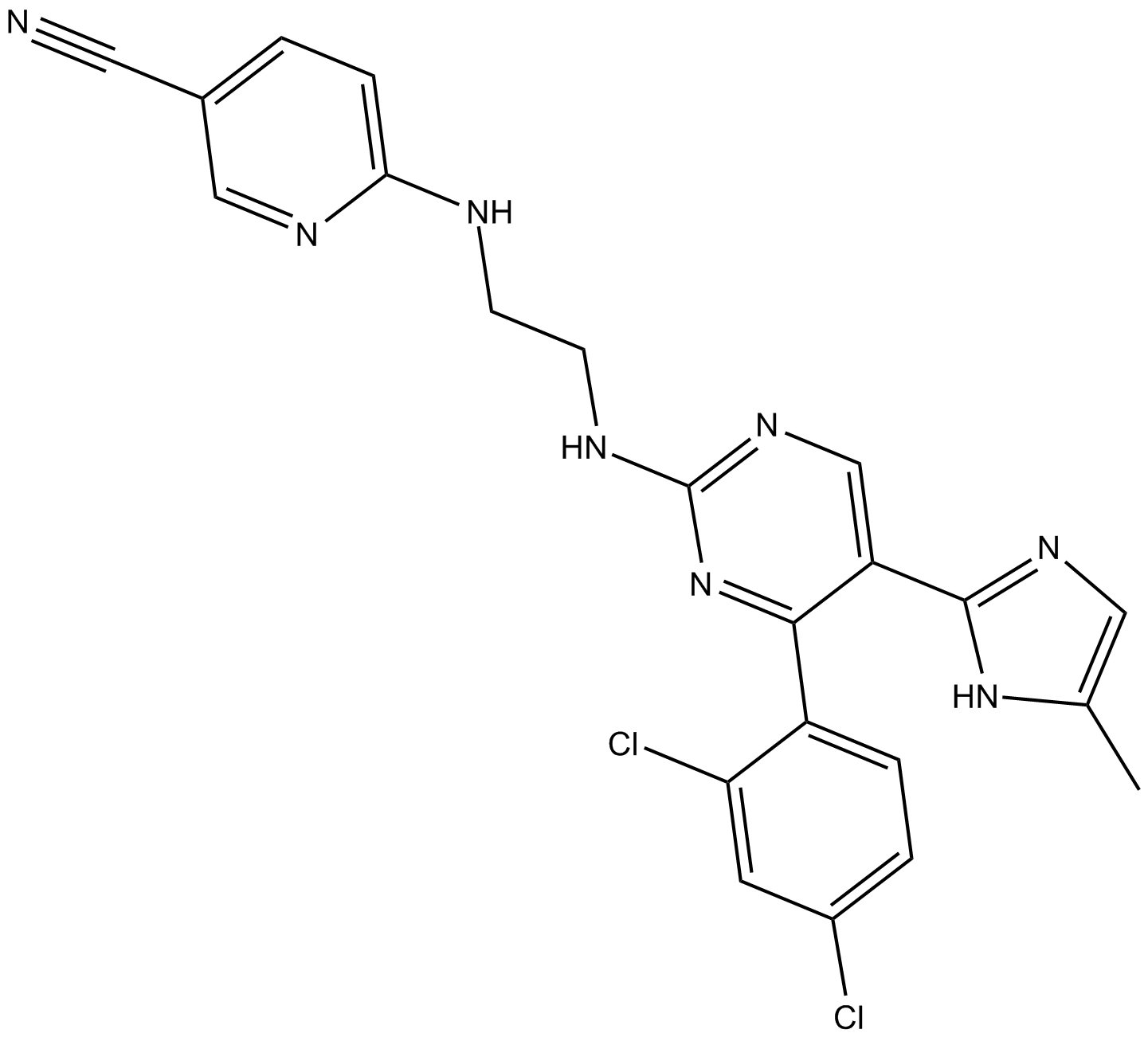
-
GC17153
CHIR-99021 (CT99021) HCl
Laduviglusib (CHIR-99021) monohydrochloride is a potent and selective GSK-3α/β inhibitor with IC50s of 10 nM and 6.7 nM. CHIR-99021 (CT99021) HCl shows >500-fold selectivity for GSK-3 over CDC2, ERK2 and other protein kinases. CHIR-99021 (CT99021) HCl is also a potent Wnt/β-catenin signaling pathway activator. CHIR-99021 (CT99021) HCl enhances mouse and human embryonic stem cells self-renewal. CHIR-99021 (CT99021) HCl induces autophagy.
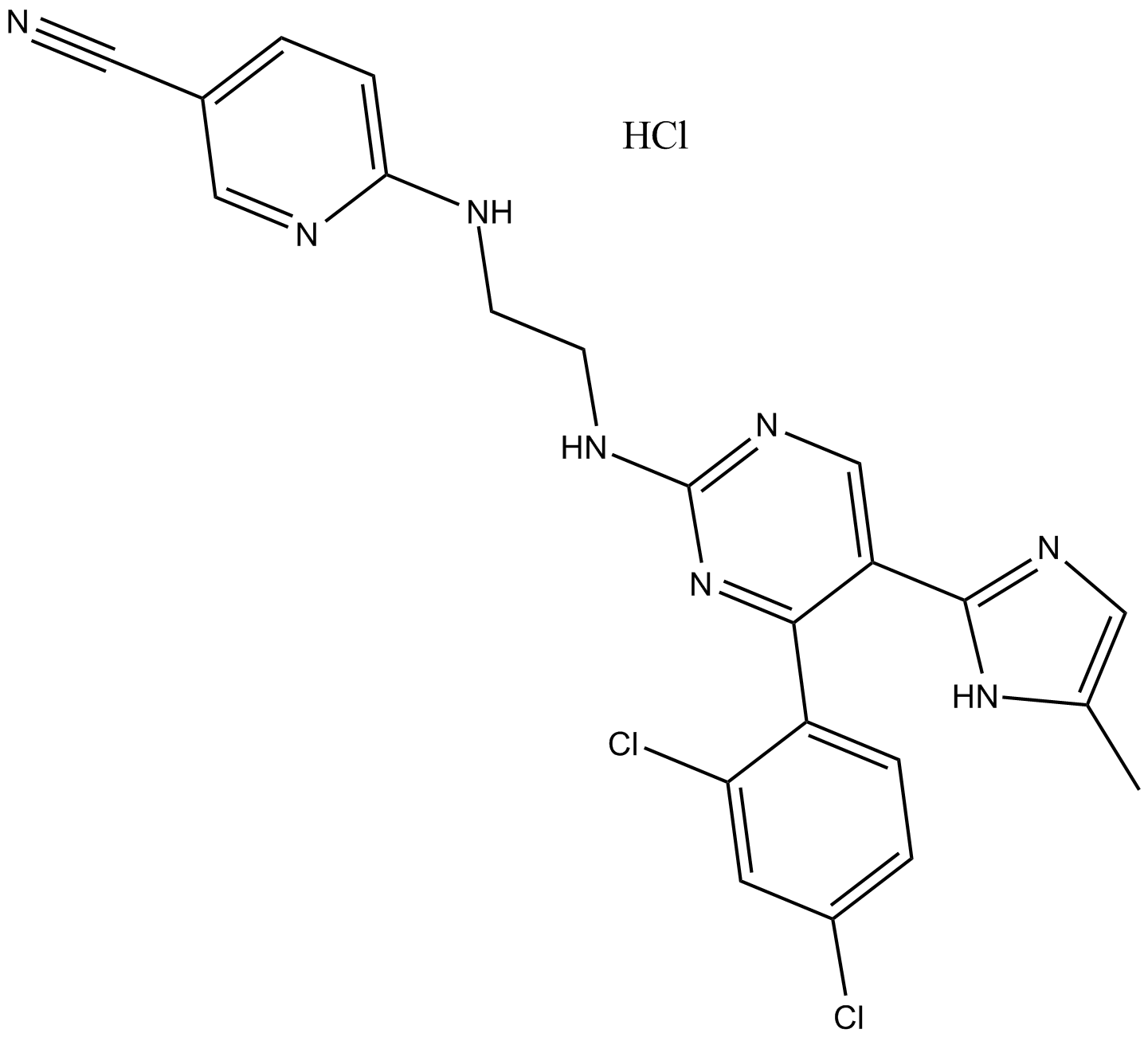
-
GC64816
Coronaridine
Coronaridine, an iboga type alkaloid, inhibits the wnt signaling pathway by decreasing β-catenin expression.
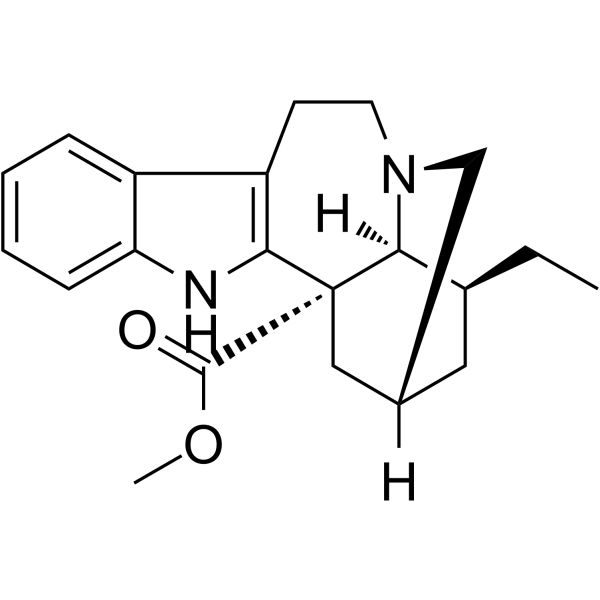
-
GC35873
DK419
DK419 is a potent and orally active Wnt/β-catenin signaling inhibitor, with an IC50 of 0.19 μM. DK419 reduces protein lelvels of Axin2, β-catenin, c-Myc, Cyclin D1 and Survivin and induces production of pAMPK.
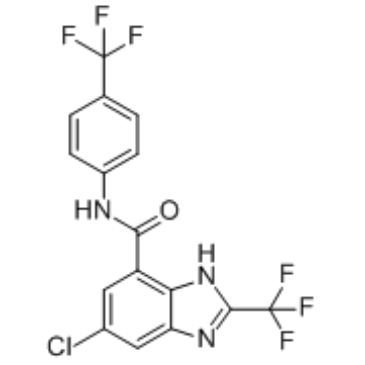
-
GC32914
EMT inhibitor-1
EMT inhibitor-1 is an inhibitor of of Hippo, TGF-β, and Wnt signaling pathways with antitumor activities.
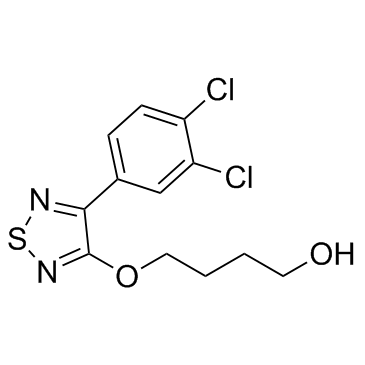
-
GC19144
ETC-159
ETC-159 is a potent, orally available PORCN inhibitor.
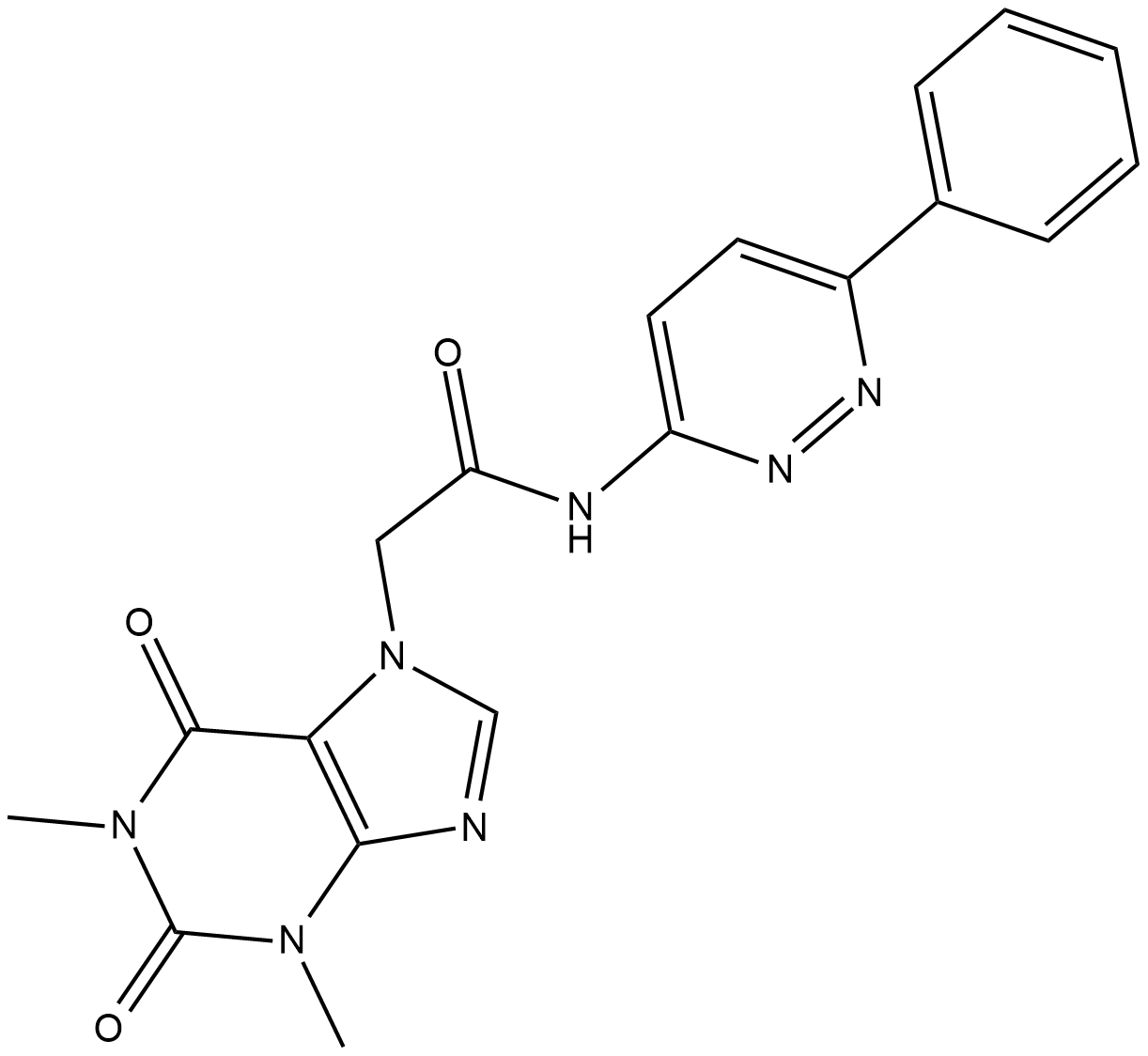
-
GC14299
exo-IWR 1
Negative control for endo-IWR 1 (Wnt signaling inhibitor)
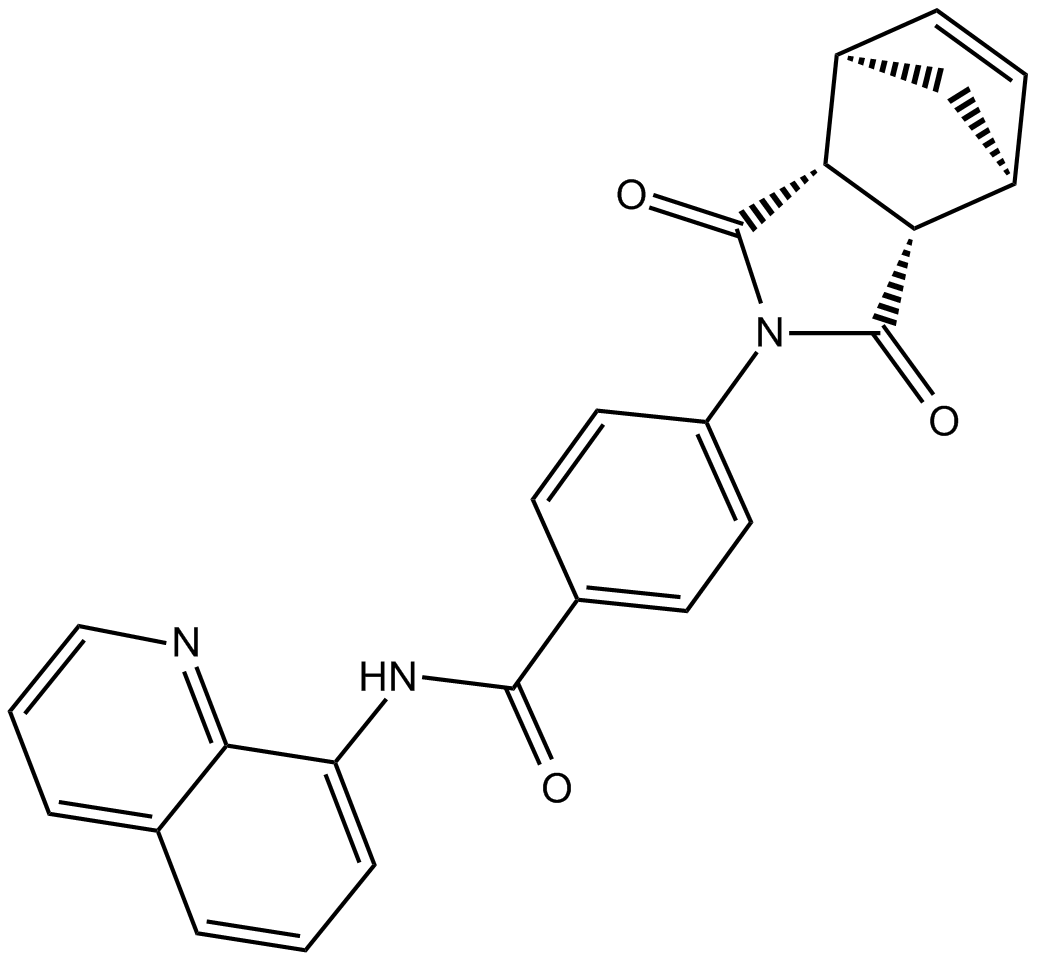
-
GC12134
FH535
An inhibitor of β-catenin signaling
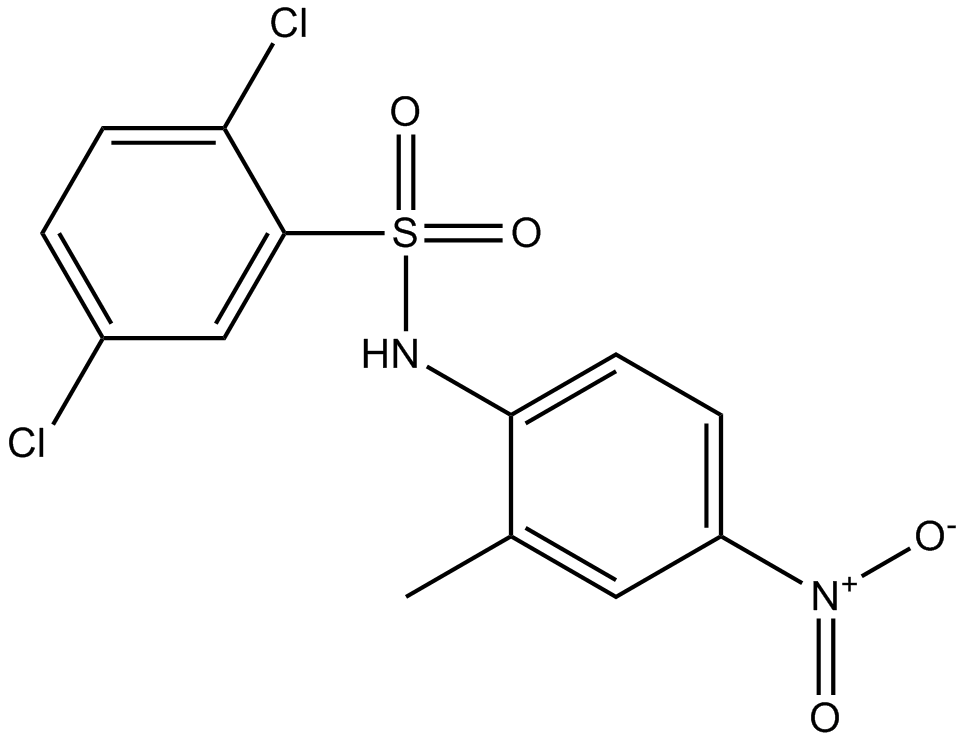
-
GC62214
FIDAS-3
FIDAS-3 is a stilbene derivative and is a potent Wnt inhibitor with an IC50 of 4.9 μM for methionine S-adenosyltransferase 2A (MAT2A). FIDAS-3 effectively competes against S-adenosylmethionine (SAM) for MAT2A binding. FIDAS-3 has anticancer activities.
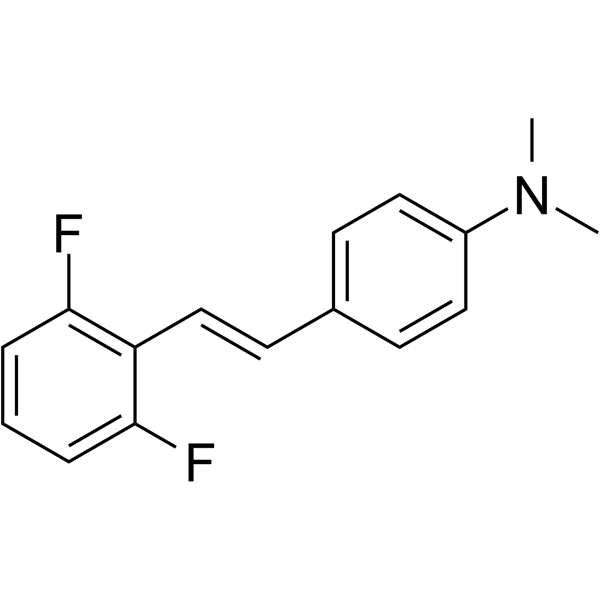
-
GC36073
Foxy-5
Foxy-5, a WNT5A agonist, is a mimicking peptide of WNT5A which is a non-canonical member of the Wnt family. Foxy-5 triggers cytosolic free calcium signaling without affecting β-catenin activation and it impairs the migration and invasion of epithelial cancer cells. Foxy-5 effectively reduces the metastatic spread of WNT5A-low prostate cancer cells in an orthotopic mouse model.
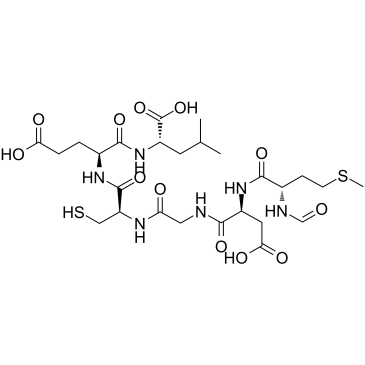
-
GC41534
FzM1
Wnt signaling proteins are small secreted proteins that are active in embryonic development, tissue homeostasis, and tumorigenesis.

-
GC50624
FzM1.8
Frizzled 4 allosteric agonist; exhibits biased siginaling; preserves stemness
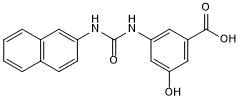
-
GC18595
G244-LM
An inhibitor of Wnt signaling
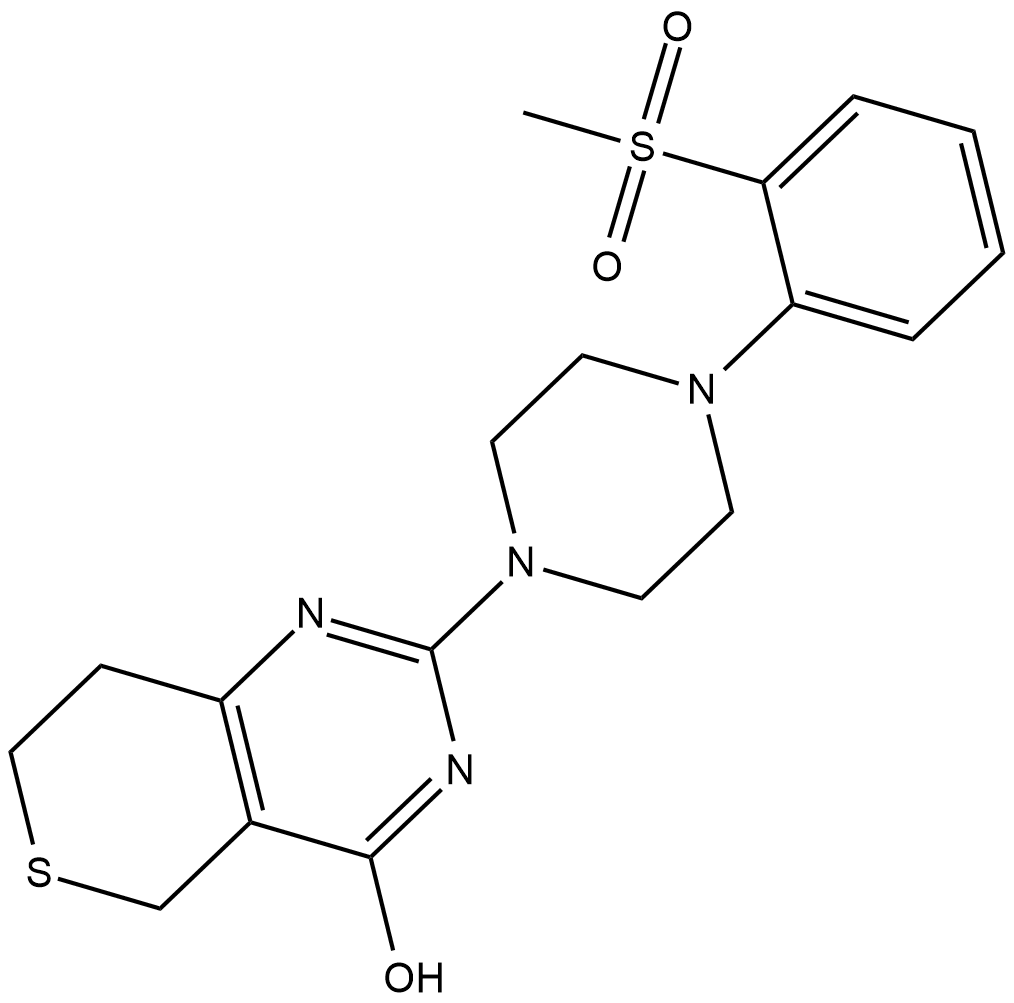
-
GC43725
Gallocyanine
Gallocyanine, a synthetic blue dyestuff, blocks DKK1 inhibitory activity by disrupting DKK1/LRP6 interaction.

-
GC33304
Gigantol
Gigantol is a bibenzyl compound derived from several medicinal orchids. Giganto shows promising therapeutic potential against cancer cells. Gigantol is a novel inhibitor of the Wnt/β-catenin pathway.
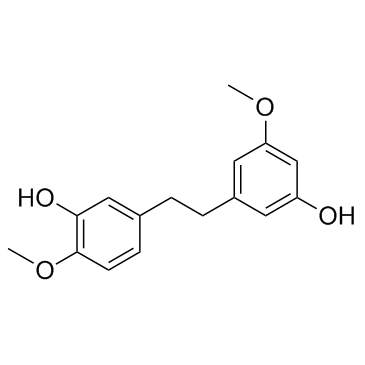
-
GC31717
Ginkgetin
A biflavonoid with diverse biological activities
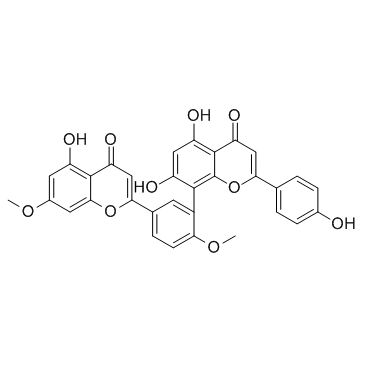
-
GC18875
GSK3β Inhibitor XVIII
An inhibitor of GSK3β
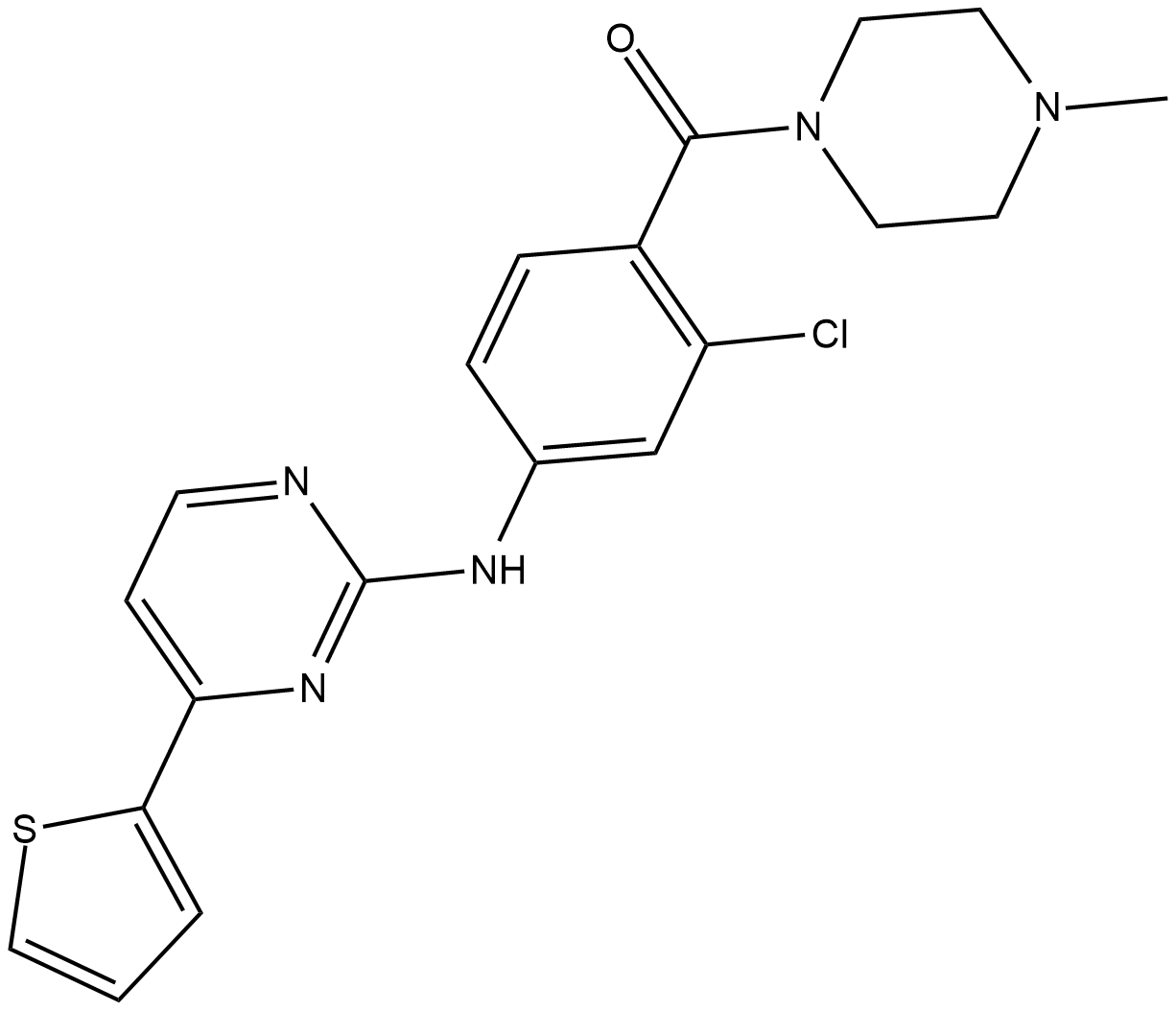
-
GC39266
Hematein
Hematein is a oxidation product of hematoxylin acted as a dye. Hematein is an allosteric casein kinase II inhibitor with an IC50 of 0.74 μM. Hematein inhibits Akt/PKB Ser129 phosphorylation, the Wnt/TCF pathway and increases apoptosis in lung cancer cells.
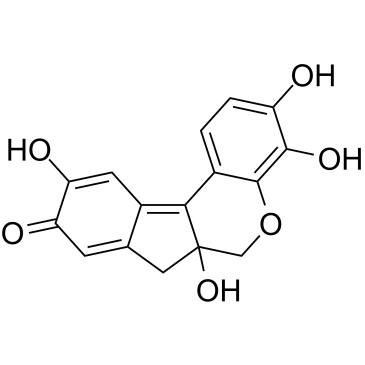
-
GC30767
Heparan Sulfate
Heparan sulfate (HS) is a complex, polyanionic polysaccharide ubiquitously expressed on cell surfaces and in the extracellular matrix.
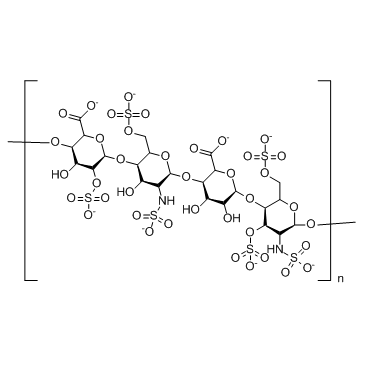
-
GC16963
HLY78
positive modulator of the Wnt/β-catenin pathway
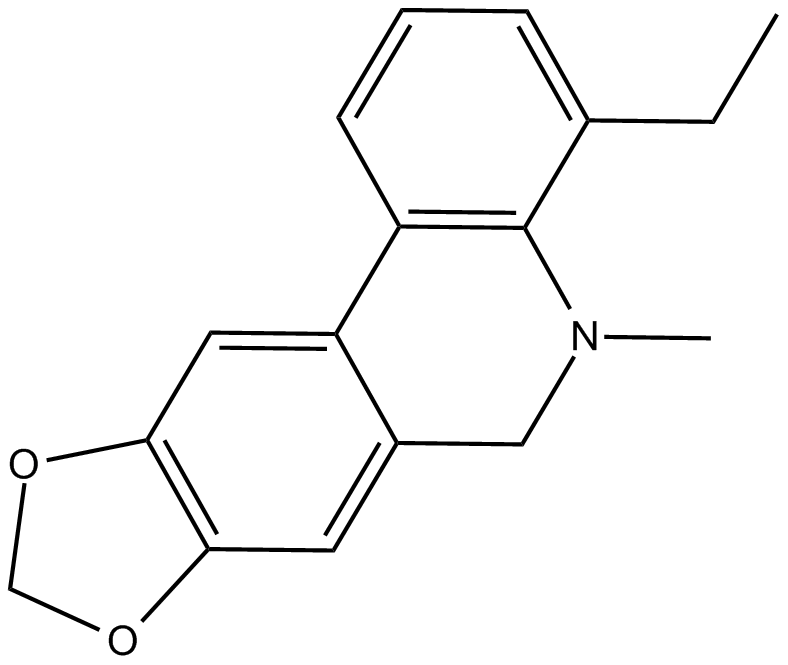
-
GC16893
ICG 001
An inhibitor of β-catenin/CBP interactions
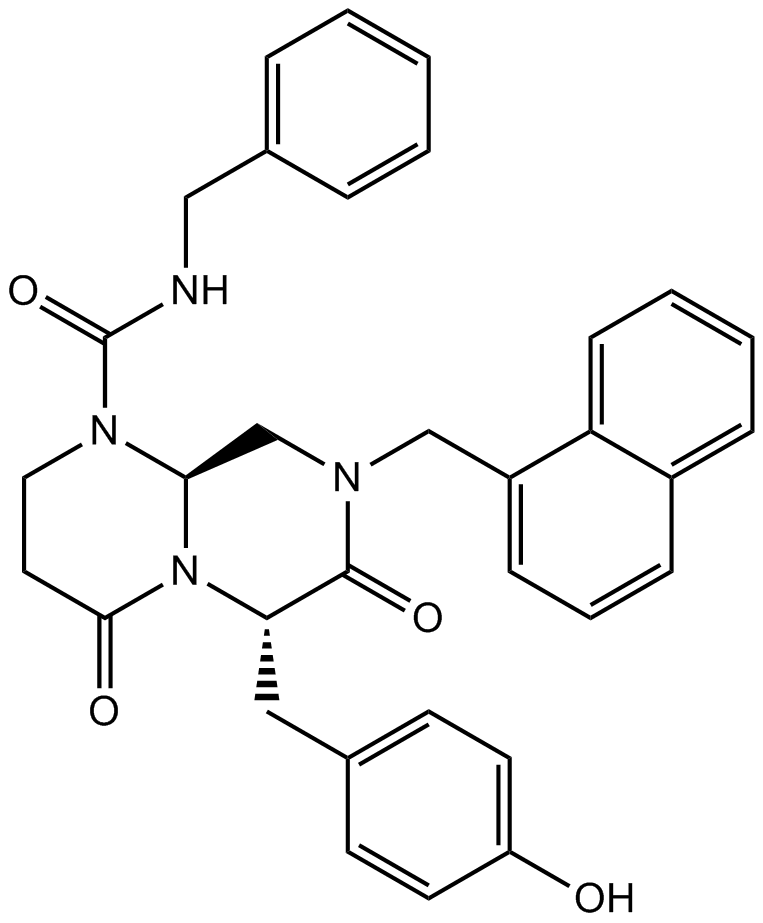
-
GC16640
iCRT 14
CRT inhibitor
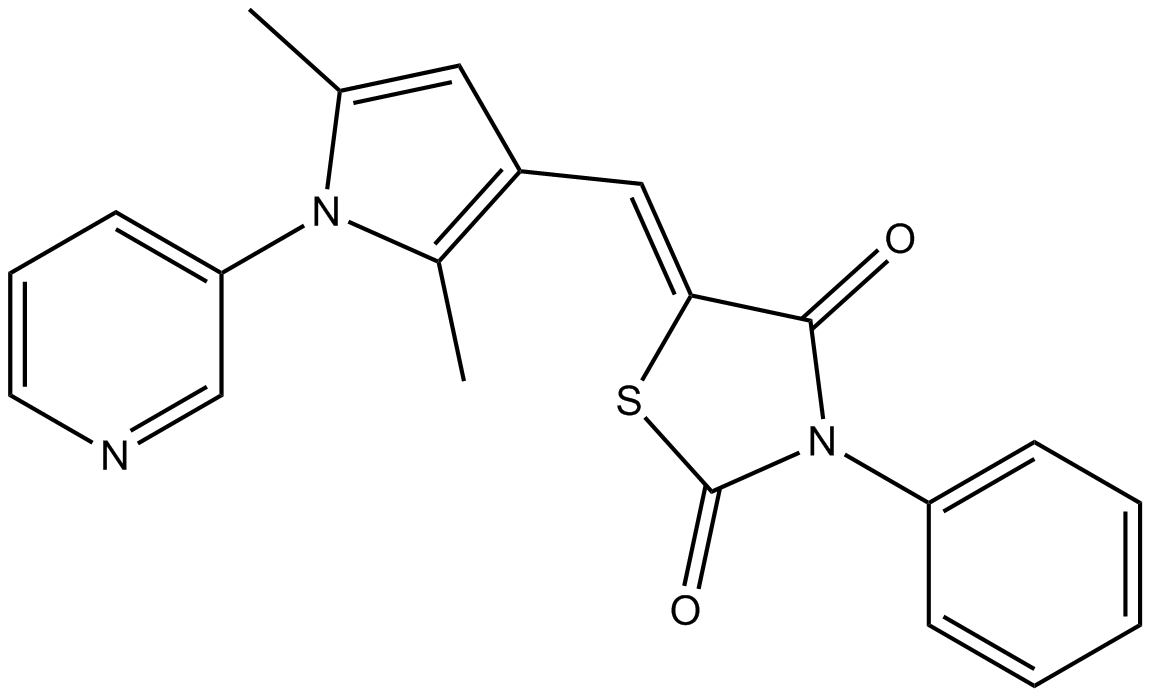
-
GC19198
iCRT3
iCRT3 is an inhibitor of both Wnt and β-catenin-responsive transcription.
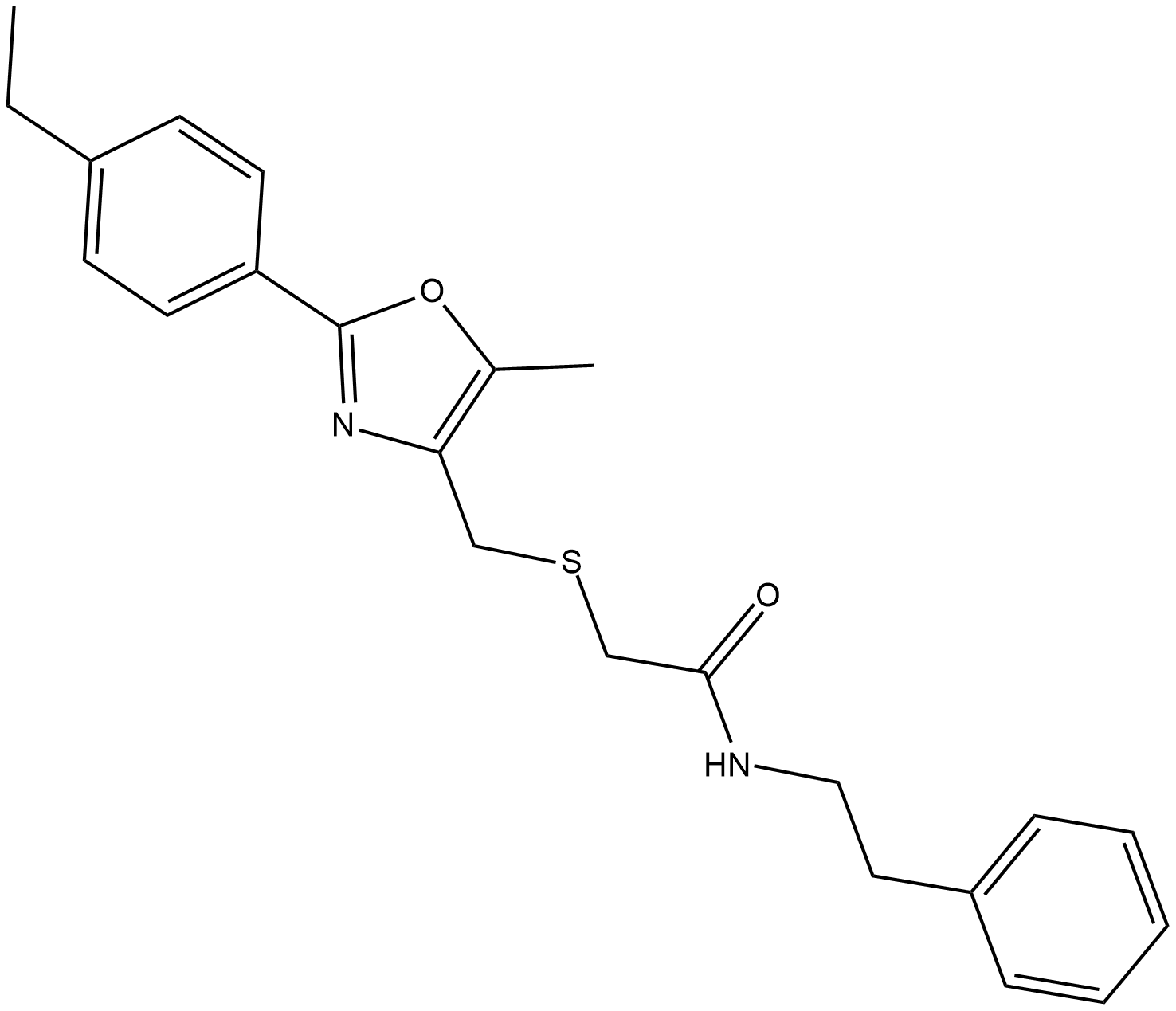
-
GC15123
IDE 1
activate the TGF-β signaling pathway
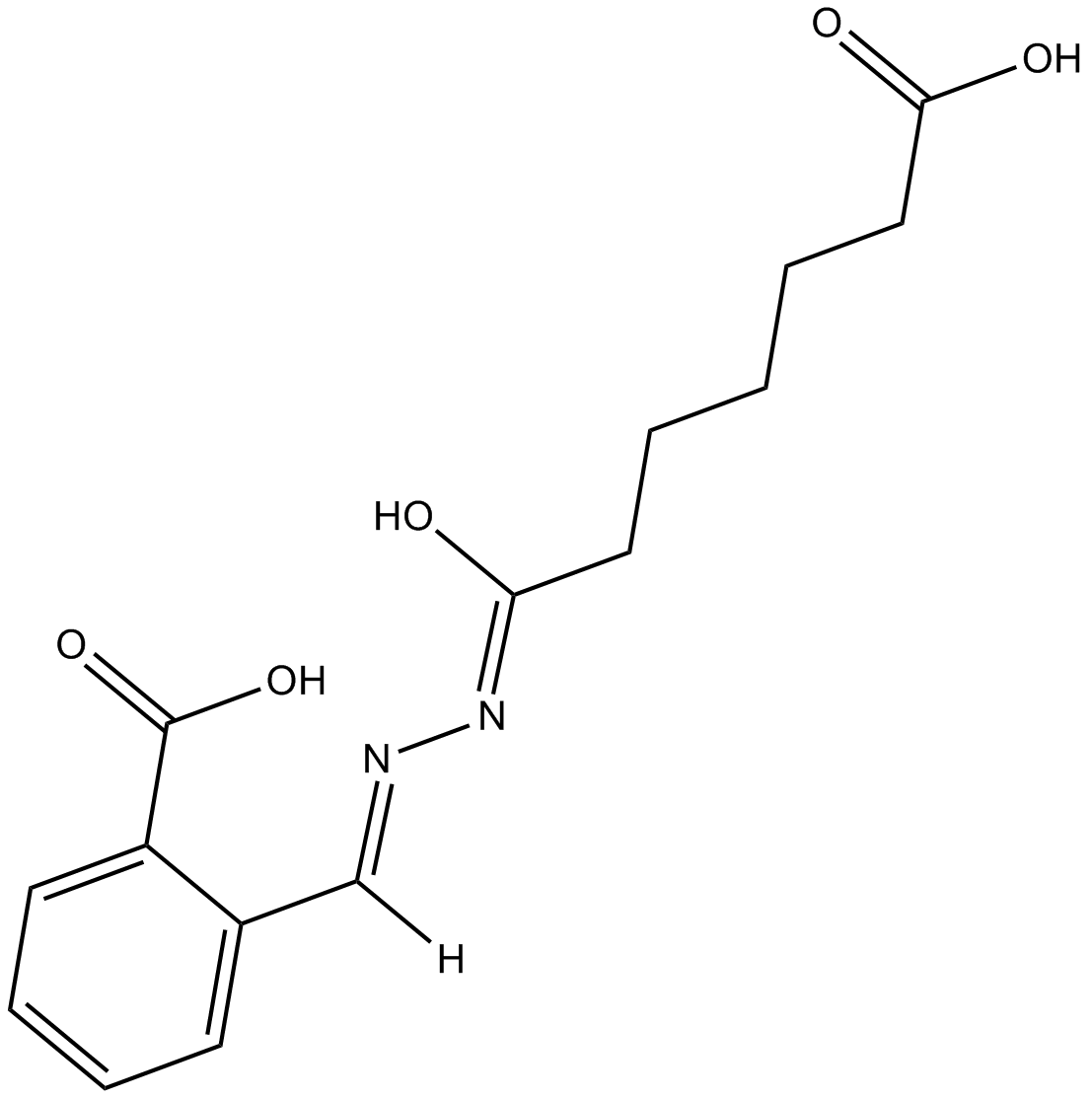
-
GC10854
IDE 2
inducer of definitive endoderm formation
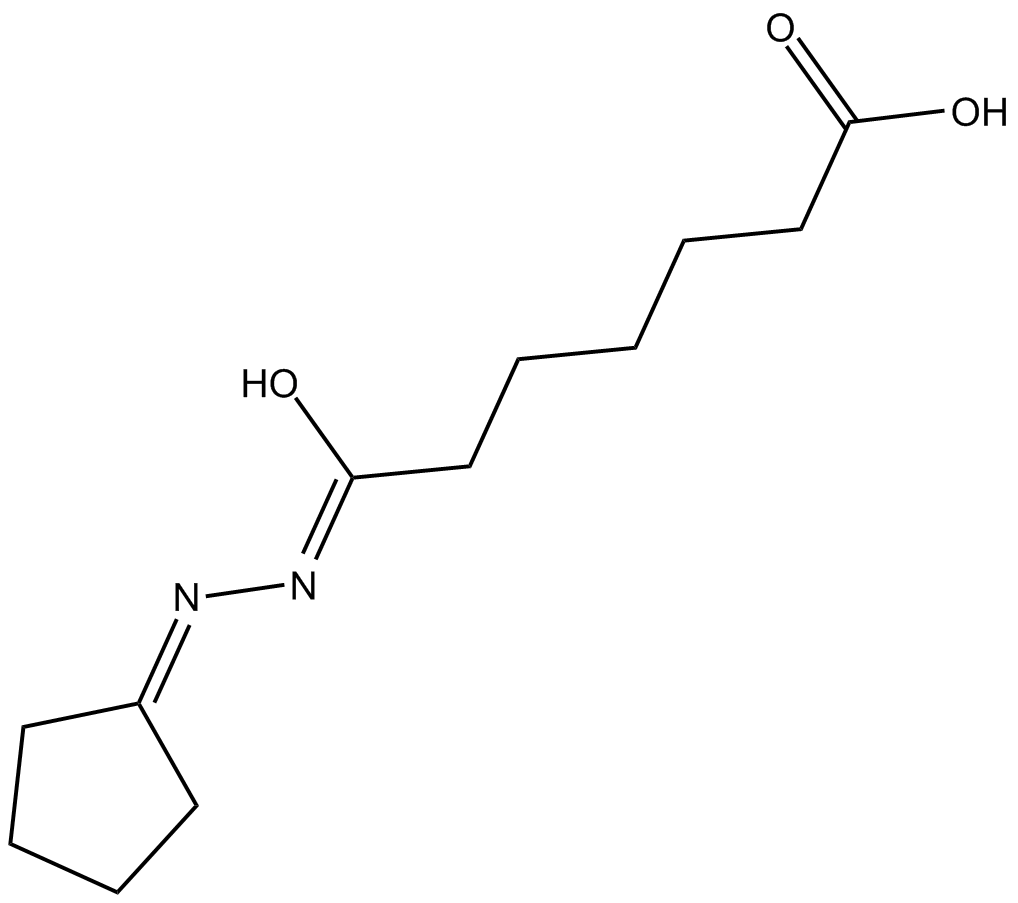
-
GC10910
IQ 1
IQ 1 is a Wnt/β-catenin/CBP signalling sustainer.
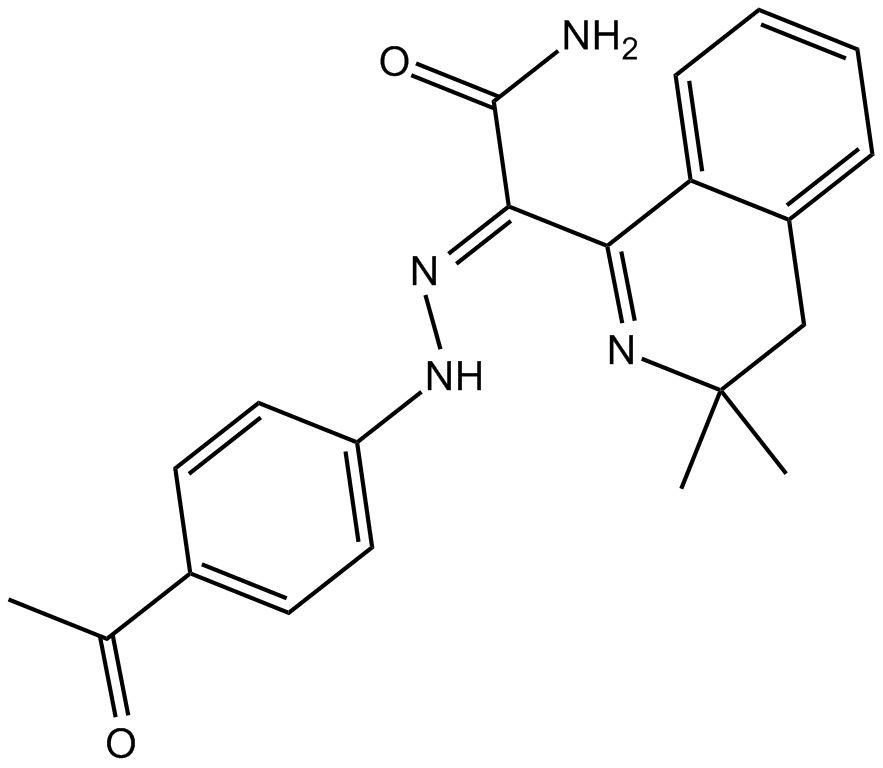
-
GC10472
ISX 9
Neurogenic agent
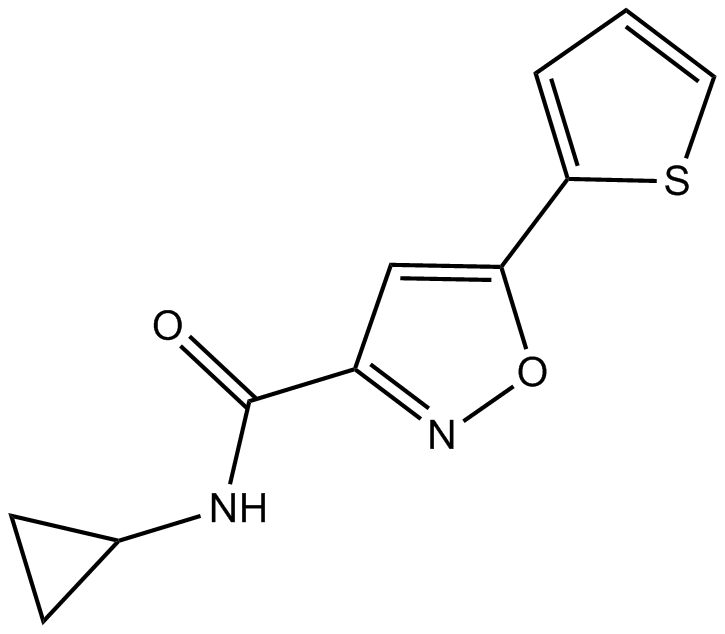
-
GC16013
IWP 4
Potent inhibitor of Wnt/β-catenin signaling
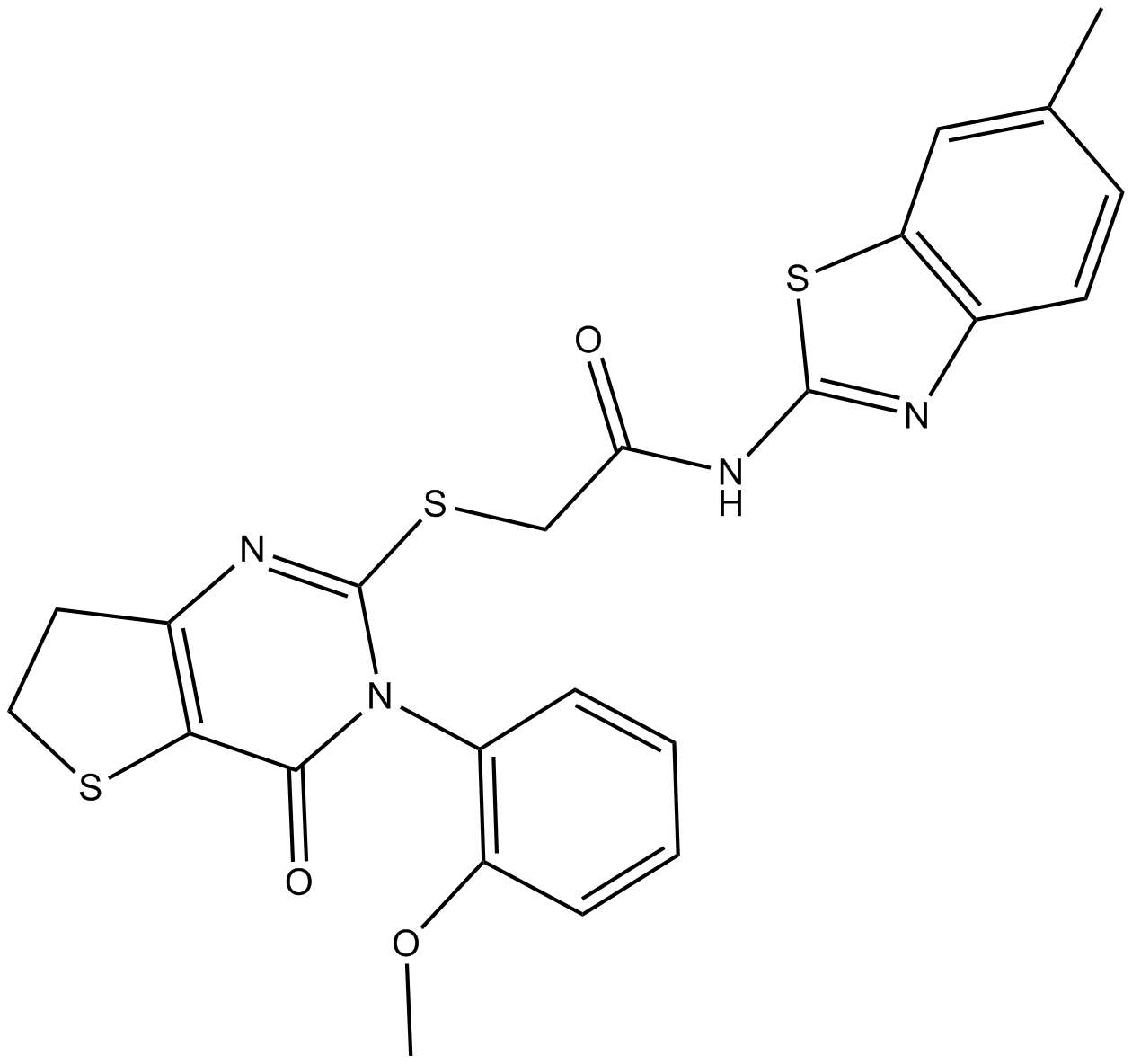
-
GC16454
IWP-2
IWP-2 is a inhibitor of the Wnt signaling pathway, with an IC50 value of 27 nM. IWP-2 is also an ATP-competitive inhibitor of CK1δ, with an IC50 value of 40 nM.
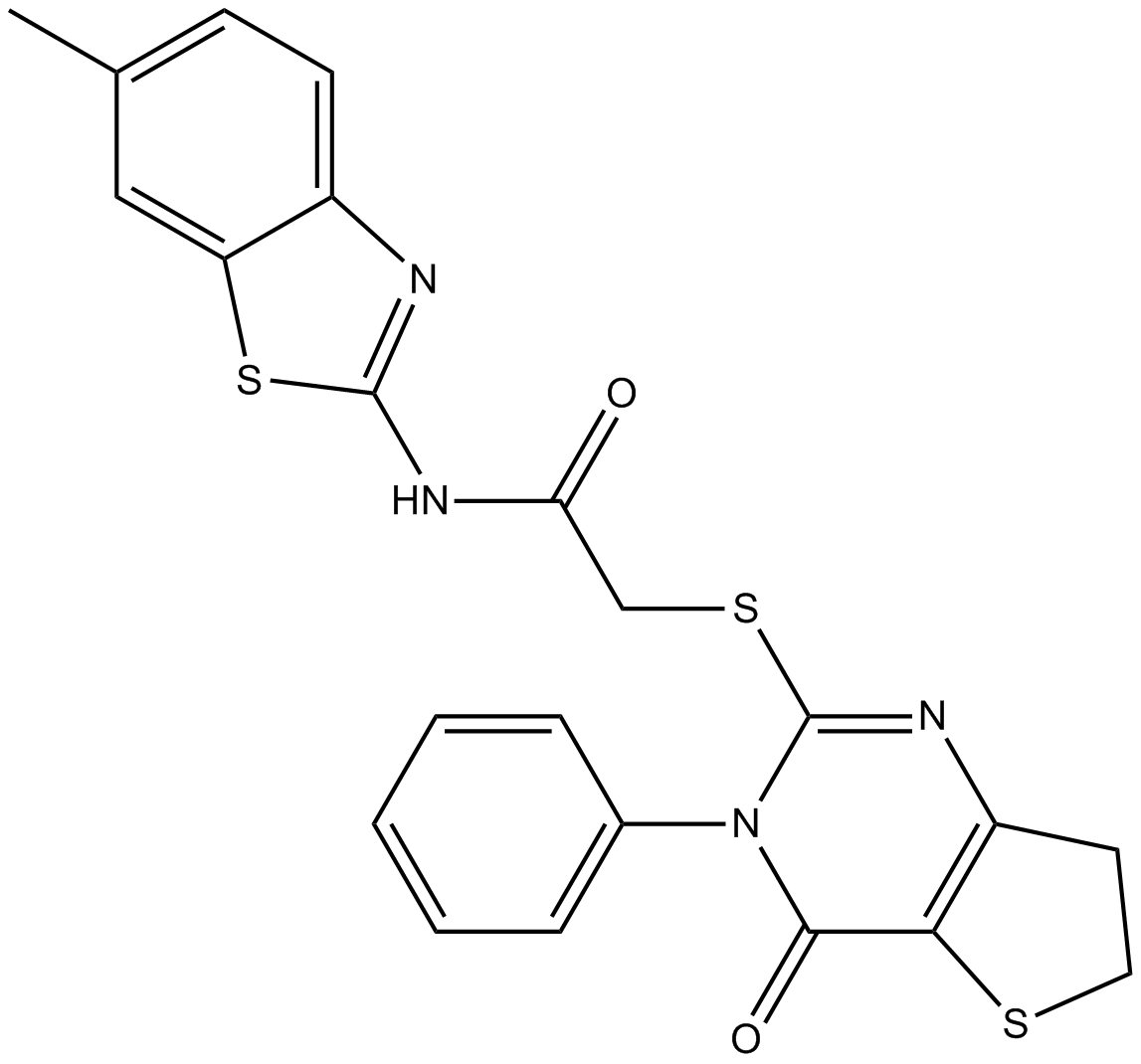
-
GC14546
IWP-2-V2
Wnt production inhibitor
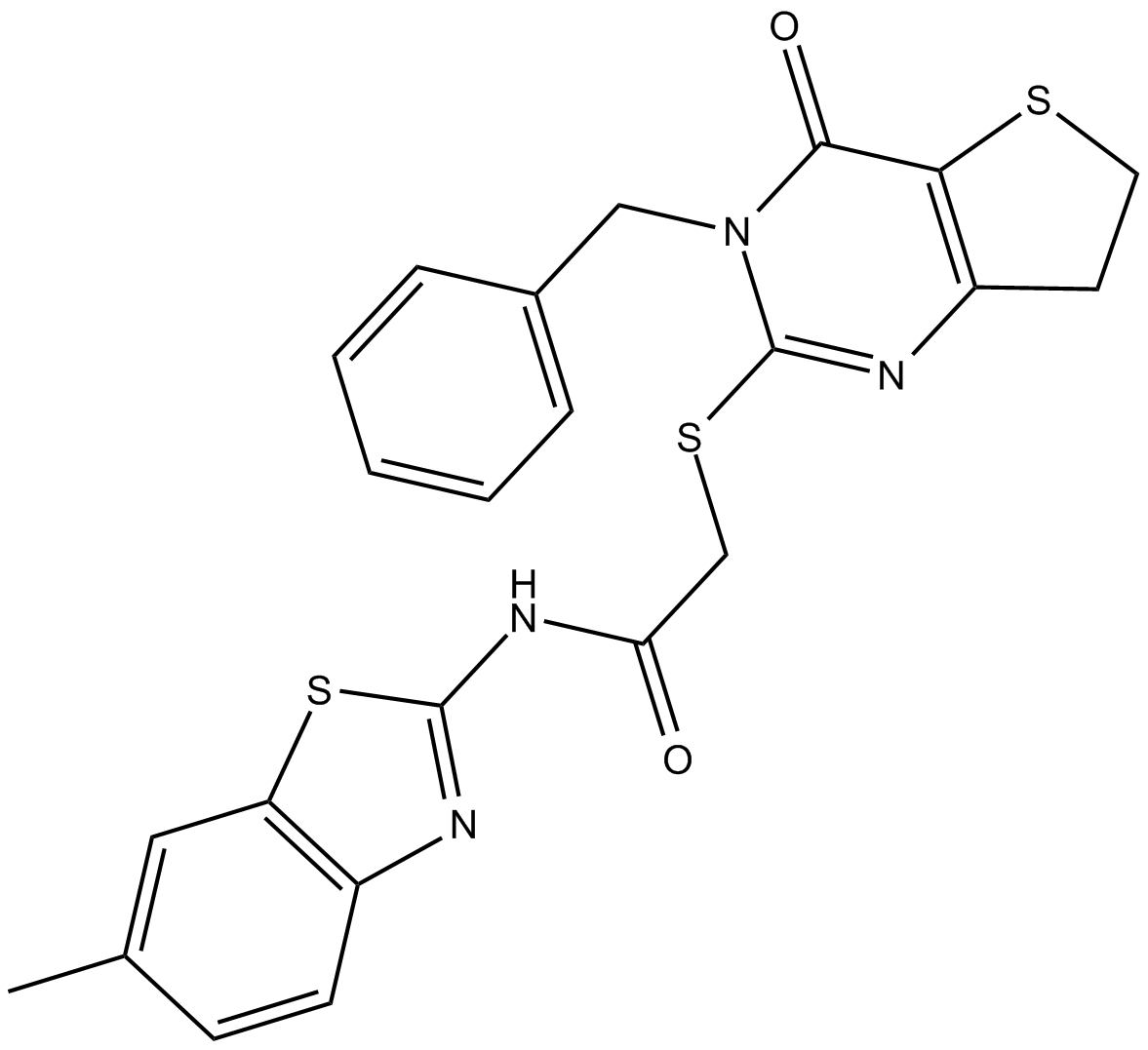
-
GC17071
IWP-3
inhibitor of Wnt production
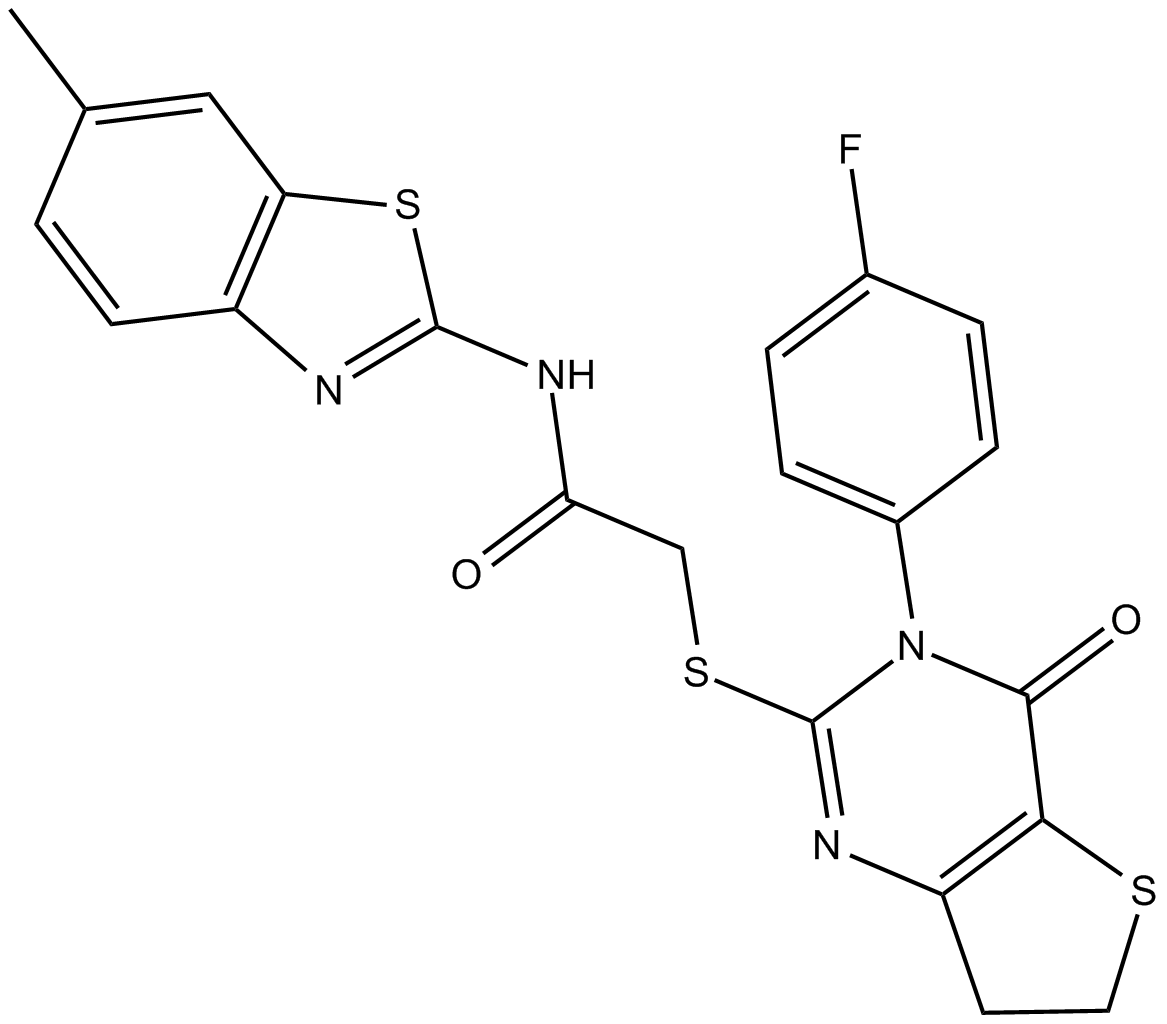
-
GC17708
IWP-L6
Porcupine inhibitor,highy potent
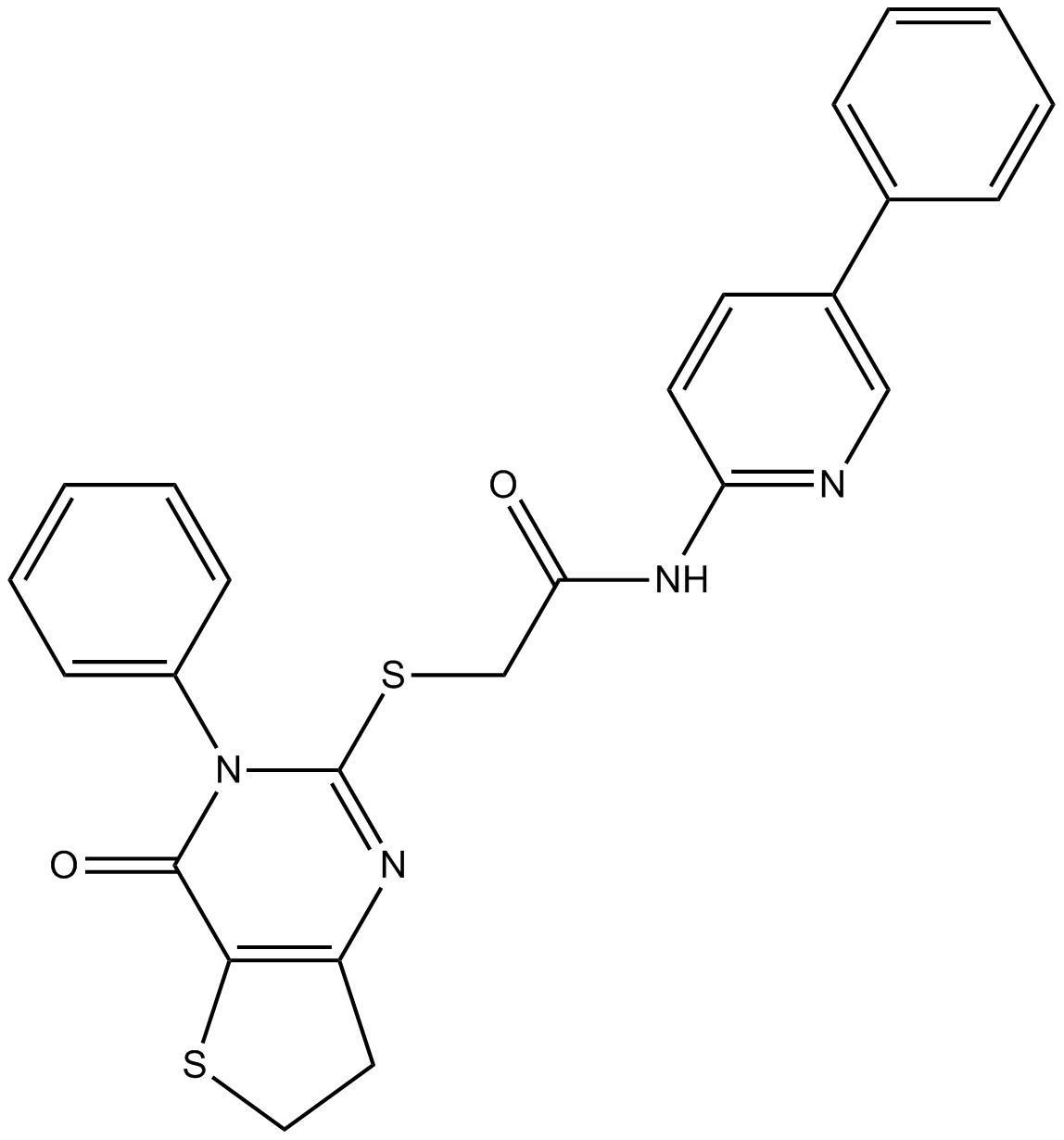
-
GC34628
IWP-O1
IWP-O1 is a highly potent Porcupine (Porcn) inhibitor, with an EC50 of 80 pM in L-Wnt-STF cells. IWP-O1 prevents the secretion of Wnt proteins. IWP-O1 suppresses the phosphorylation of Dvl2/3 and LRP6 in HeLa cells.
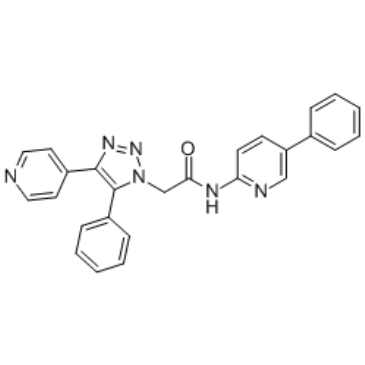
-
GC10950
IWR-1-endo
IWR-1-endo is a tankyrase inhibitor which inhibits Wnt/β-catenin signaling pathway.
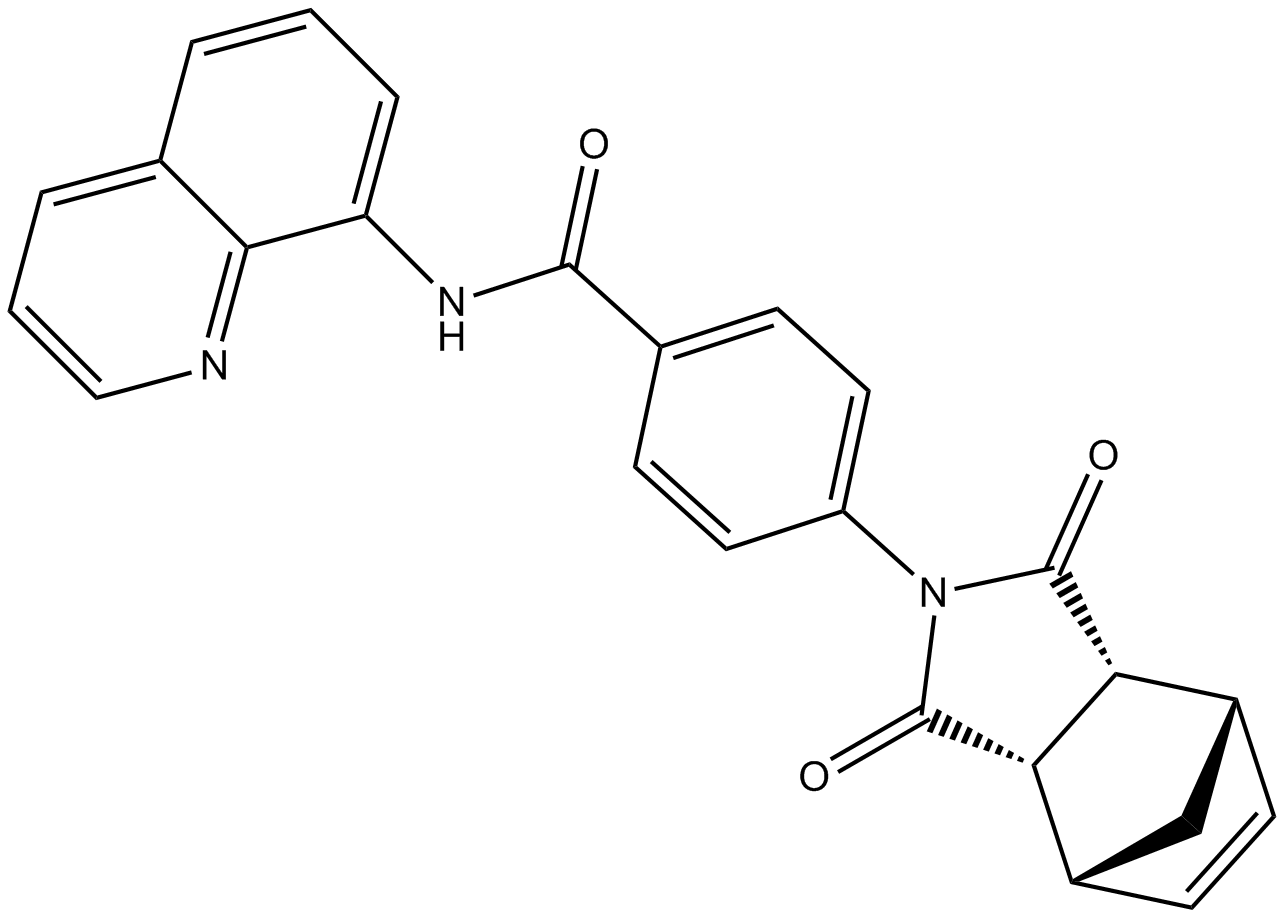
-
GC18734
JS-K
JS-K is a nitric oxide (NO) donor that reacts with glutathione to generate NO at physiological pH.
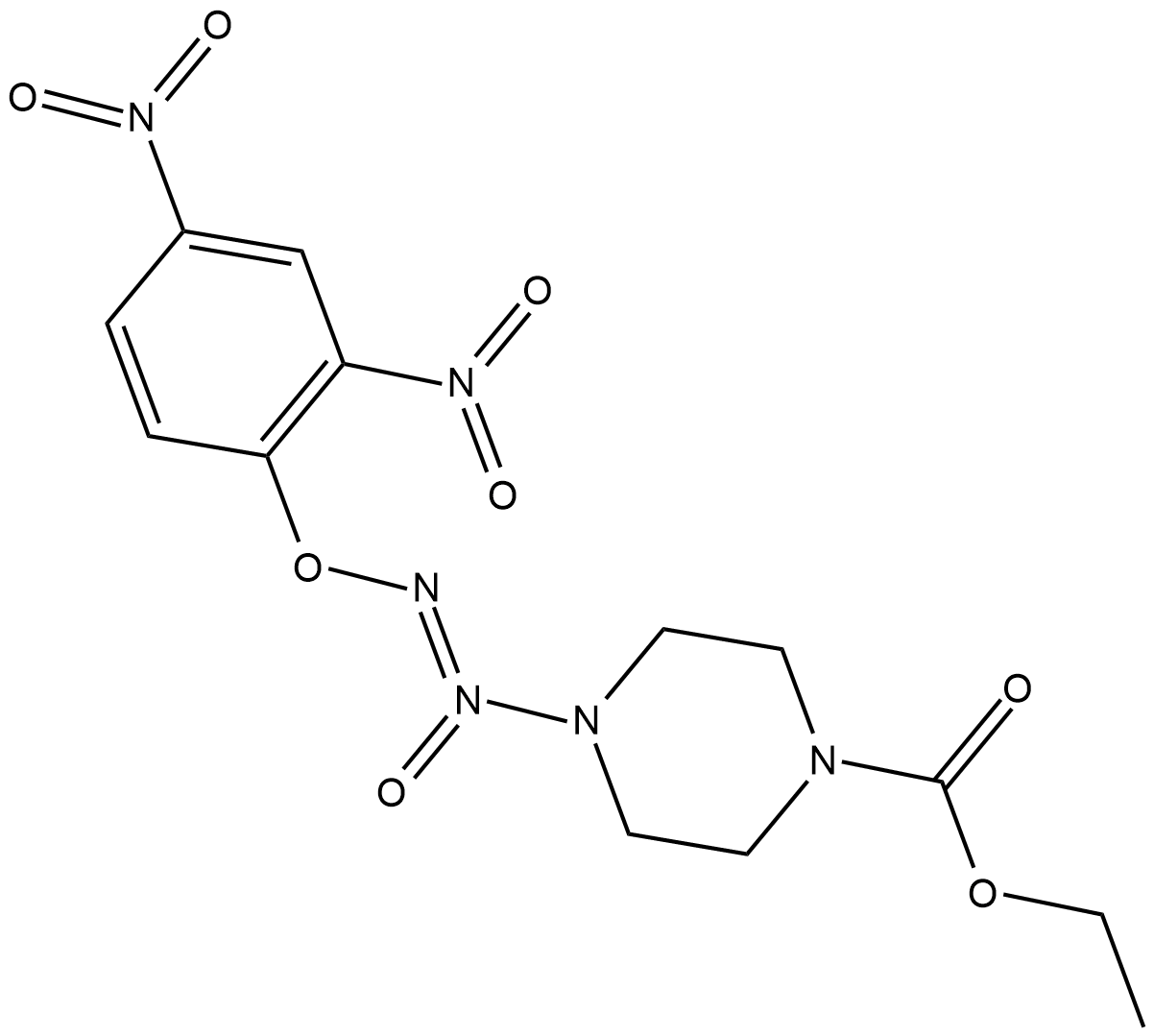
-
GC12869
JW 55
A TNKS1/2 inhibitor
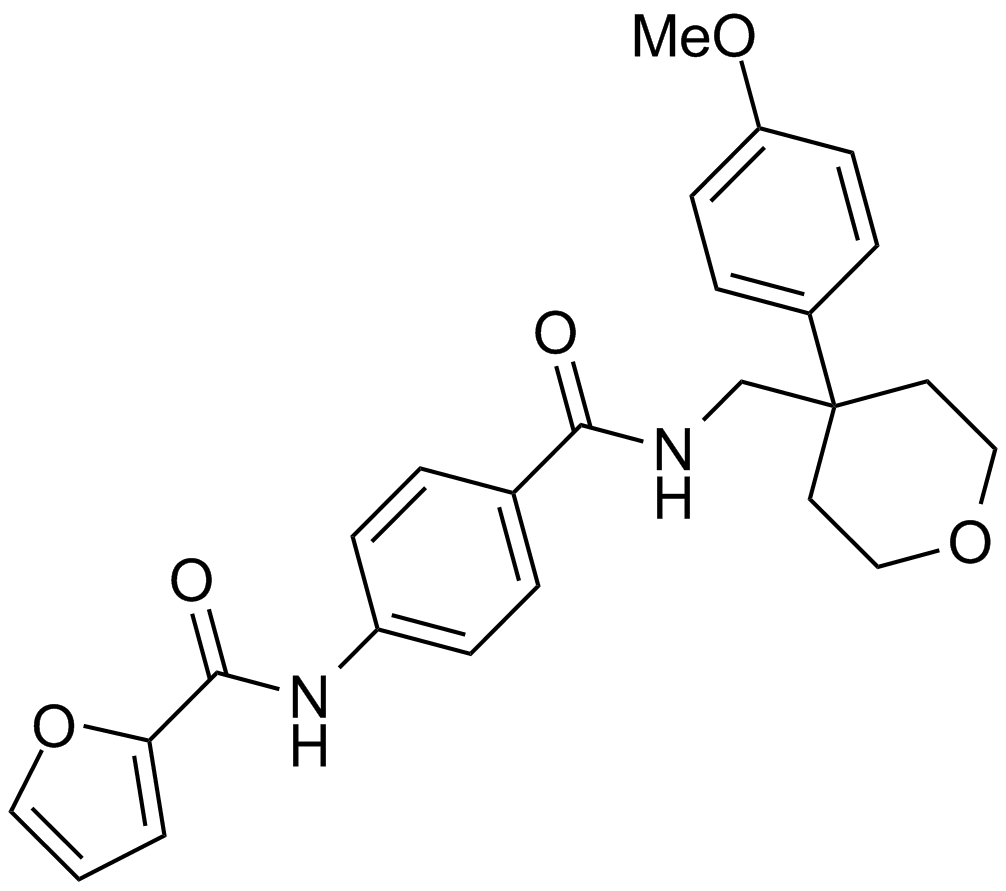
-
GC10138
JW 67
inhibitor of canonical Wnt pathway signaling
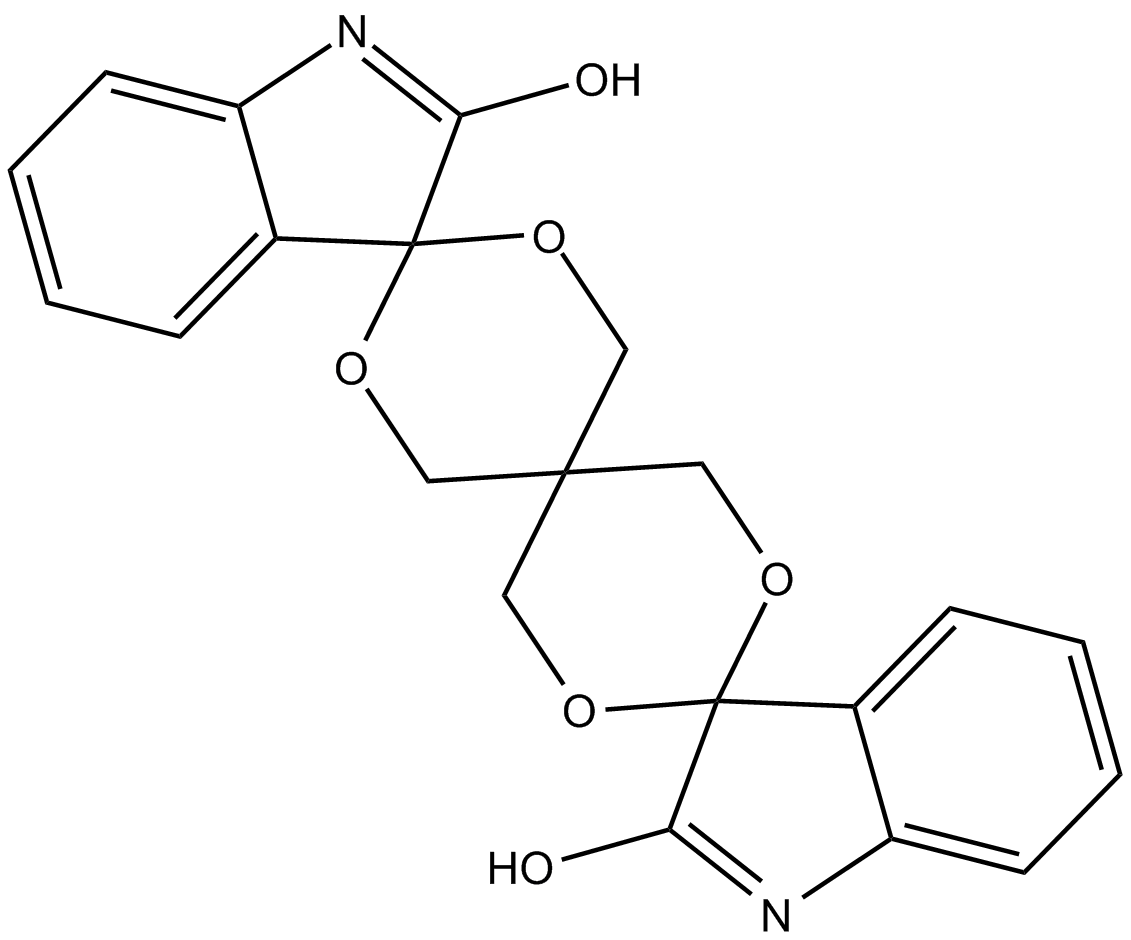
-
GC13978
JW 74
inhibitor of the catalytic PARP domain of TNKS1/2
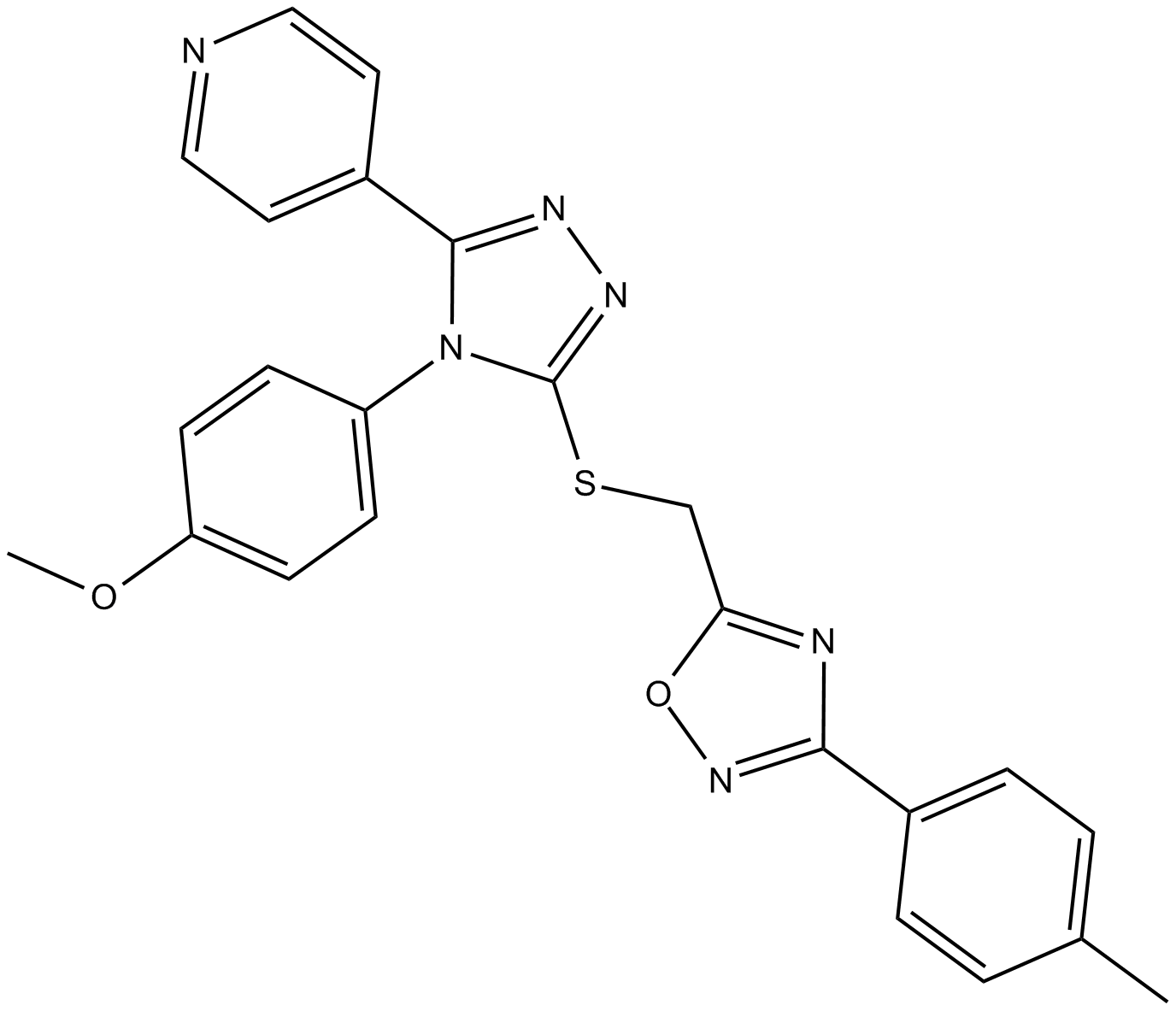
-
GC15057
Kartogenin
Promote differentiation of multipotent MSCs into chondrocytes
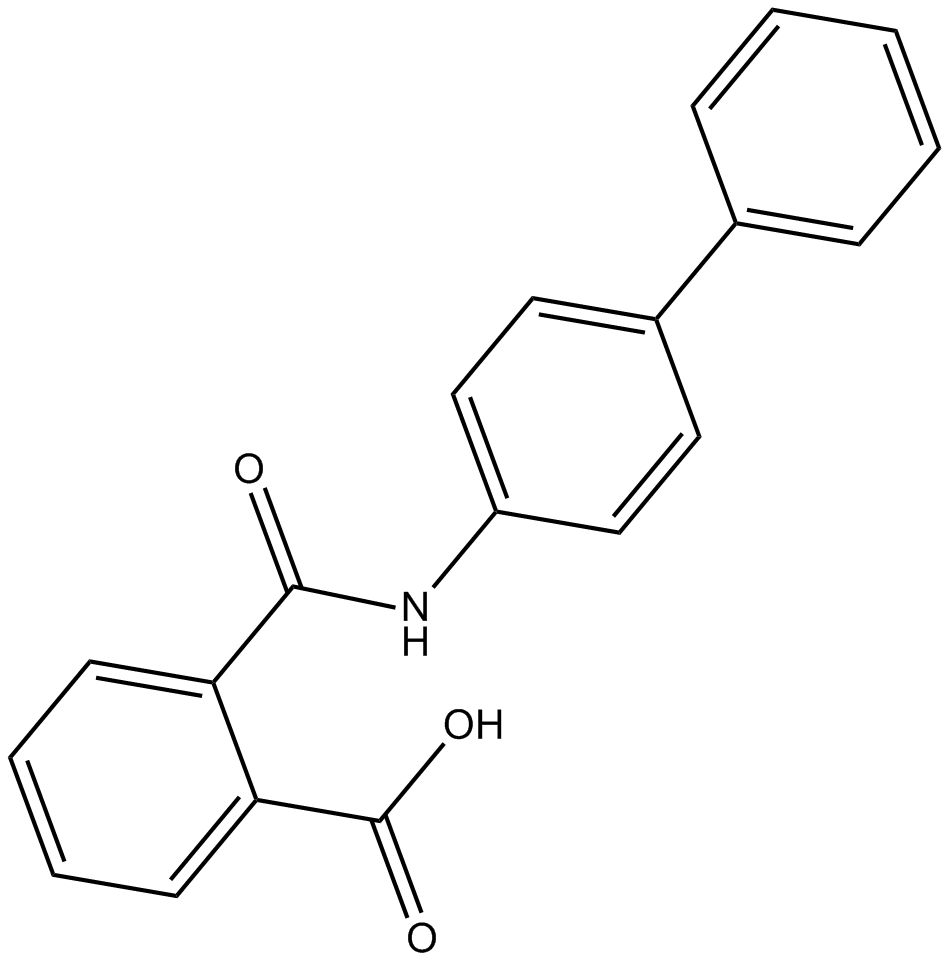
-
GC13582
KHS 101 hydrochloride
neuronal differentiation inducer
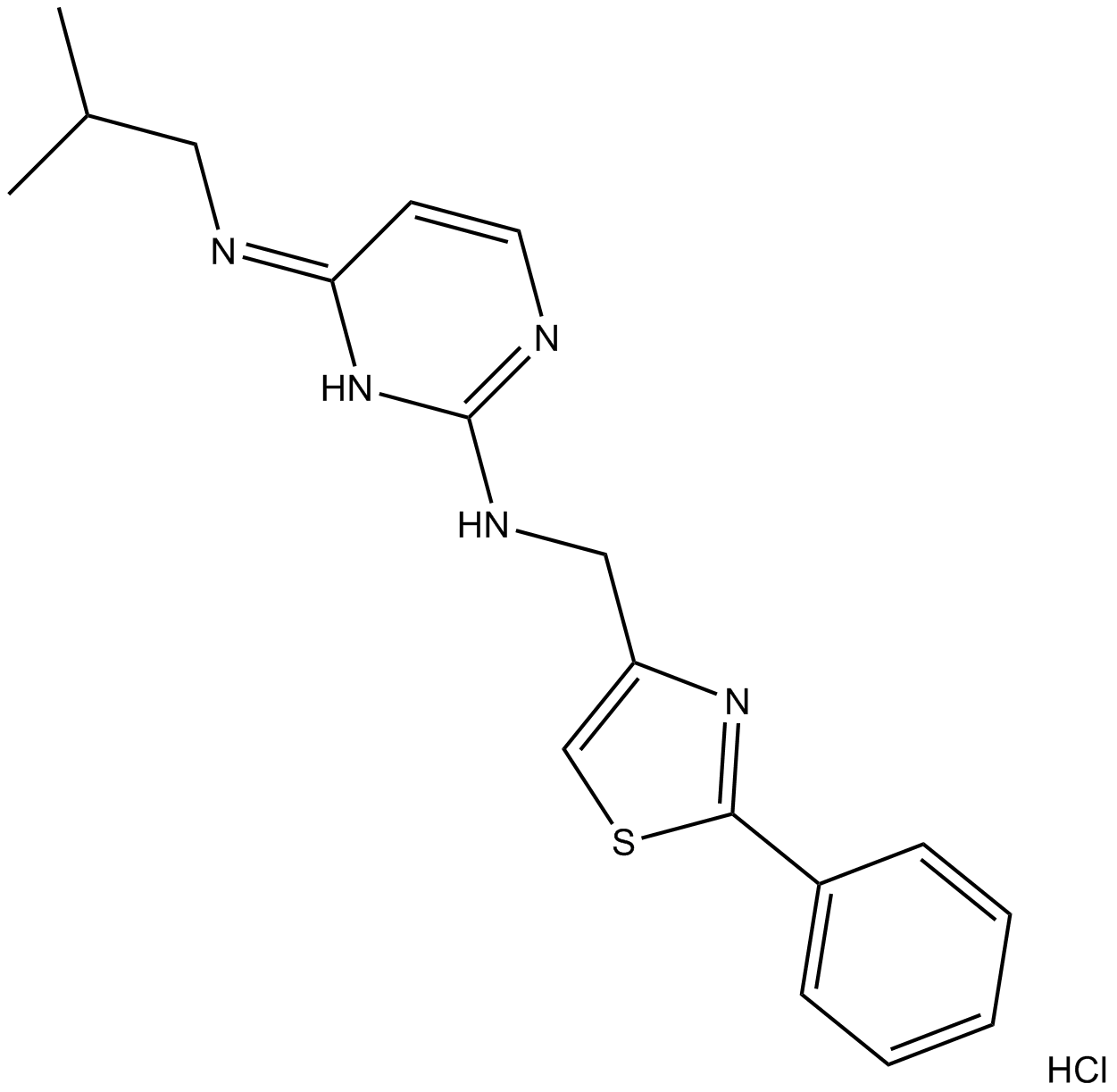
-
GC46015
KY 05009
A TNIK inhibitor

-
GC63465
KY-02327
KY-02327, a metabolically stabilized KY-02061 analog, is a potent Dishevelled (Dvl)-CXXC5 interaction inhibitor.
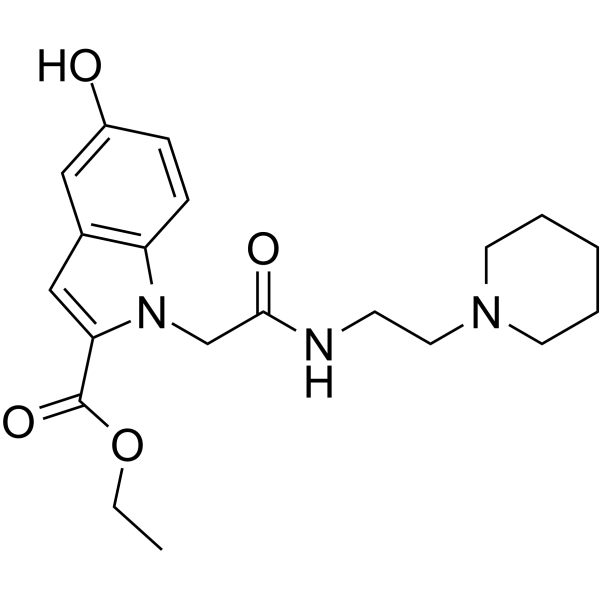
-
GC65356
KY-02327 acetate
KY-02327 acetate, a metabolically stabilized KY-02061 analog, is a potent Dishevelled (Dvl)-CXXC5 interaction inhibitor.
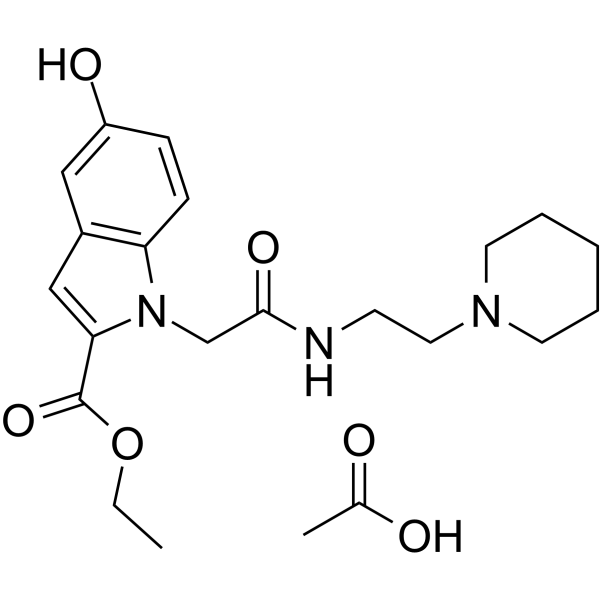
-
GC32923
KY1220
KY1220 is a compound that destabilizes both β-catenin and Ras, via targeting the Wnt/β-catenin pathway; with an IC50 of 2.1 μM in HEK293 reporter cells.
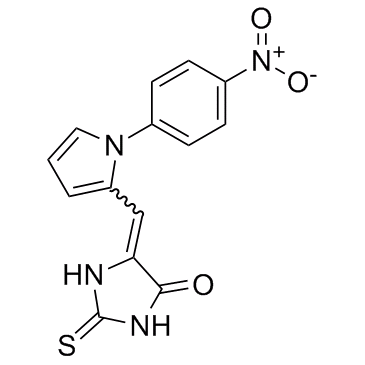
-
GC19216
KYA1797K
A potent and selective Wnt/β-catenin inhibitor
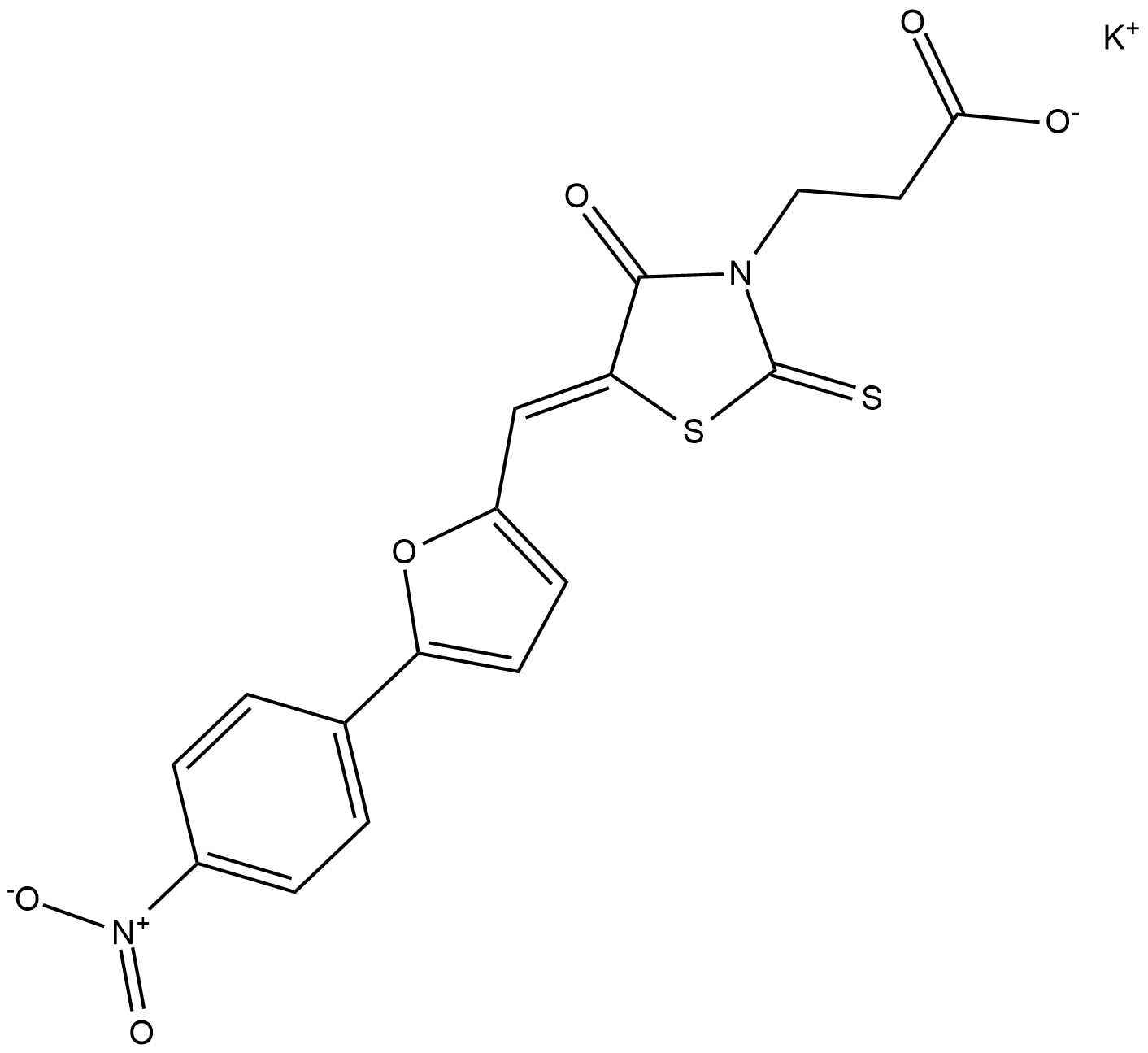
-
GC36483
L-Quebrachitol
L-Quebrachitol is a natural product isolated from many plants, promotes osteoblastogenesis by uppregulation of BMP-2, runt-related transcription factor-2 (Runx2), MAPK (ERK, JNK, p38α), and Wnt/β-catenin signaling pathway.
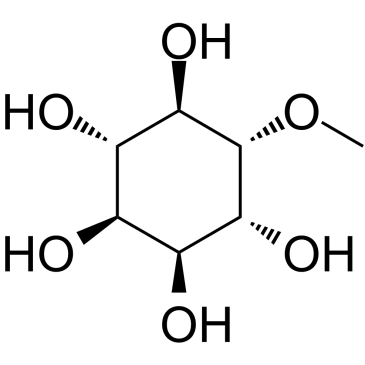
-
GC32763
LF3
LF3 is an antagonist of the β-Catenin/TCF4 interaction with antitumor activity; has an IC50 of 1.65 μM.
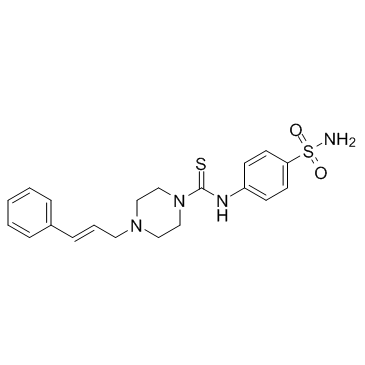
-
GC12392
LGK-974
PORCN inhibitor,potent and specific
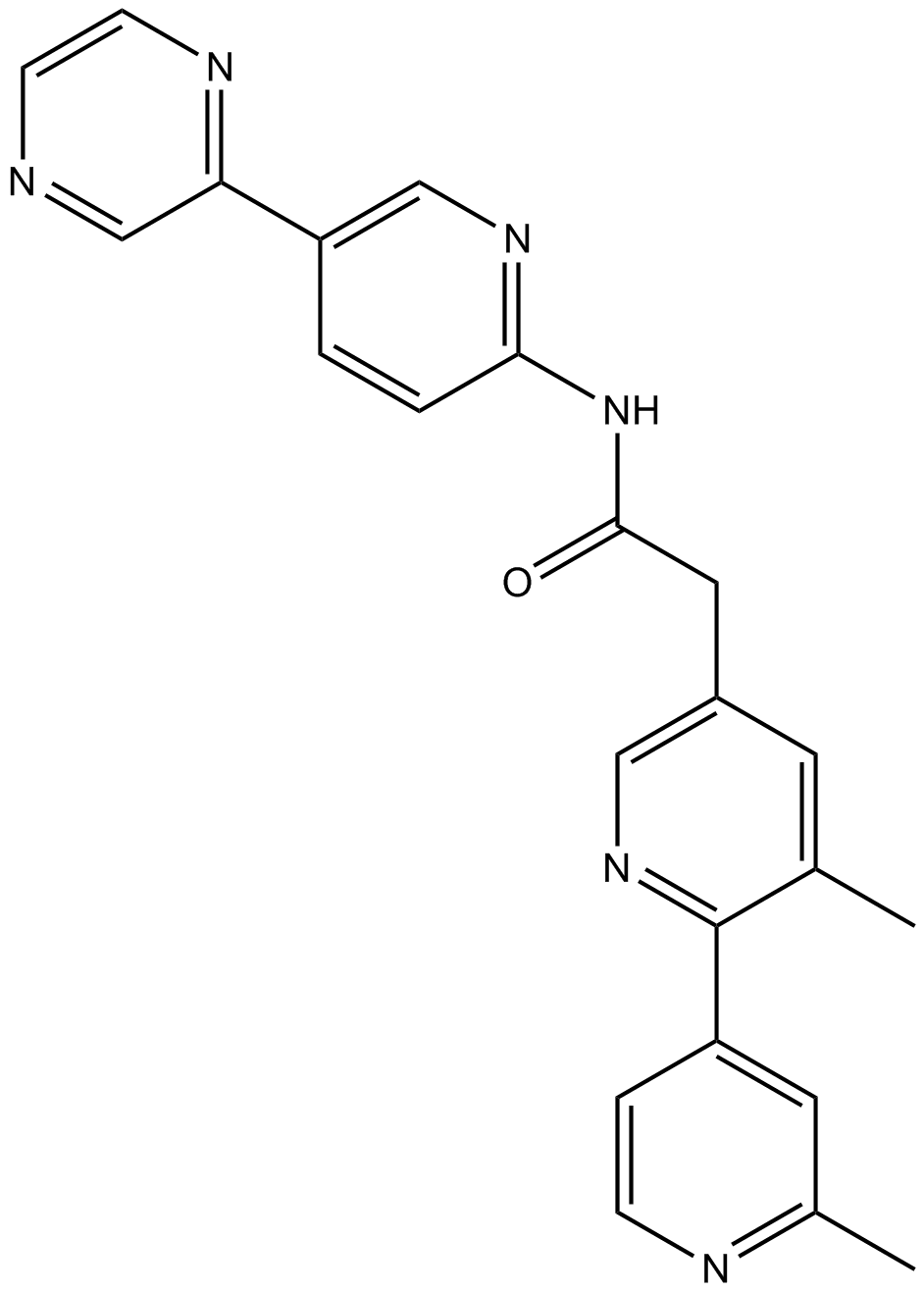
-
GC47570
Lipoxygenin
An inhibitor of 5-LO

-
GC25603
M2912
M2912 (MSC2504877) is a very potent TNKS1/TNKS2 inhibitor (IC50=0.6 nM for TNKS1) with exquisite selectivity over other PARP family enzymes and favorable compound properties. This inhibitor potently modulates the Wnt/β-catenin pathway by elevating the levels of axin2 (EC50=17 nM) and tankyrase in DLD1 cells in a dose-dependent manner resulting in reduced cellular Wnt reporter activity.

-
GC31794
Methyl vanillate
Methyl vanillate, one of the ingredients in Hovenia dulcis Thunb, is a Wnt/β-catenin pathway activator.
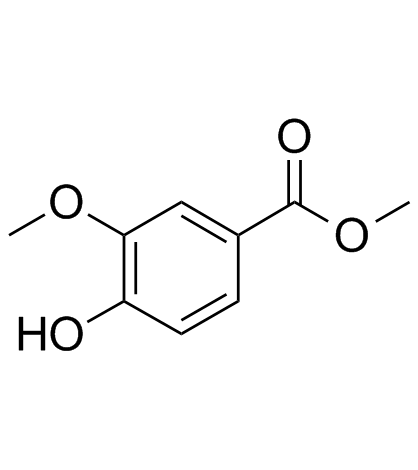
-
GC63100
N-Desmethylnefopam D5 hydrochloride
N-Desmethylnefopam D5 hydrochloride is a deuterium labeled N-Desmethylnefopam hydrochloride.
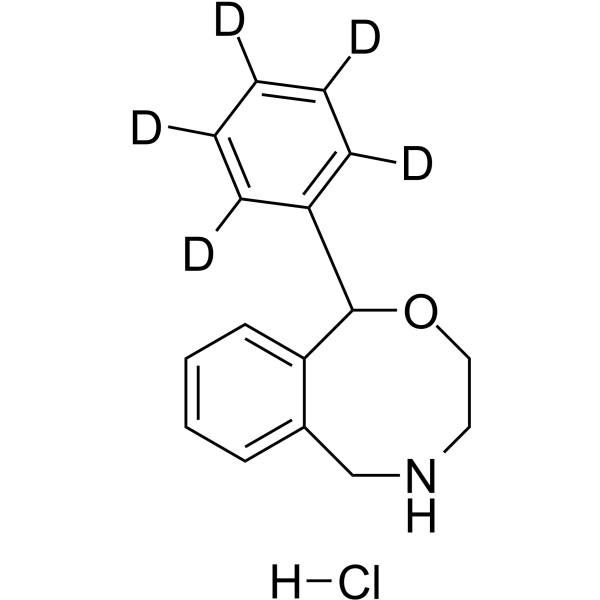
-
GC19260
NCB-0846
NCB-0846 is an orally available TNIK inhibitor with an IC50 of 21 nM.
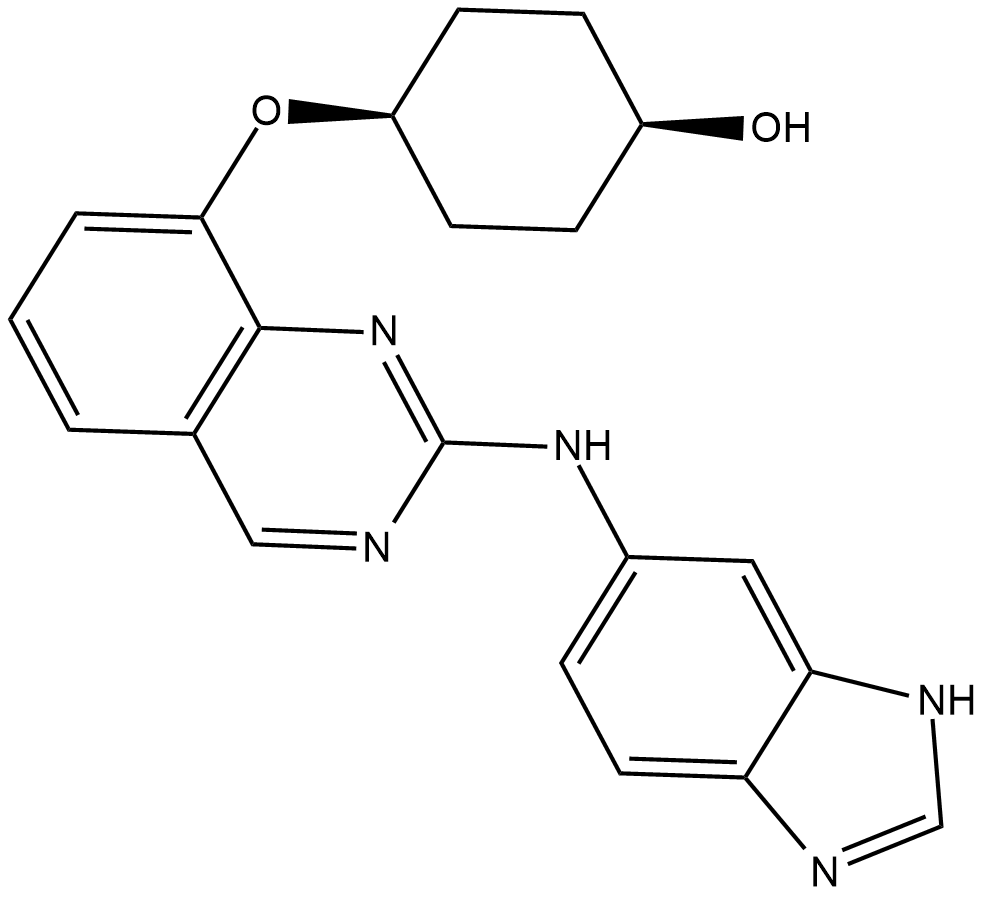
-
GC64837
Nefopam D3 hydrochloride
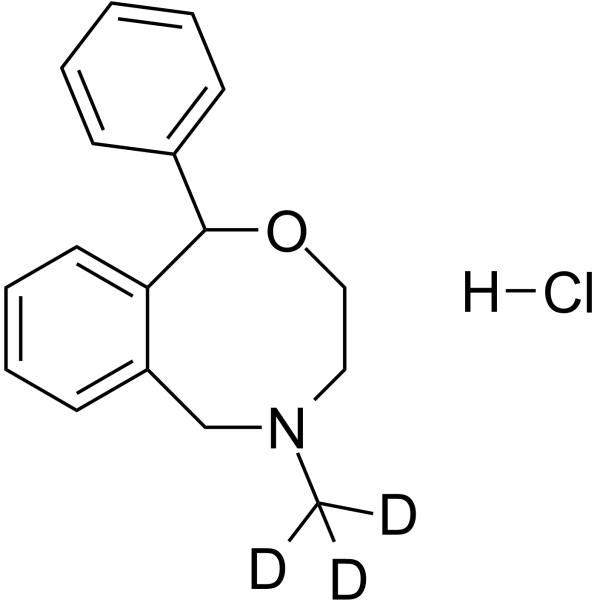
-
GC11775
Nefopam HCl
Nefopam HCl (Fenazoxine hydrochloride) is a centrally-acting but non-opioid analgesic drug, for the relief of moderate to severe pain.
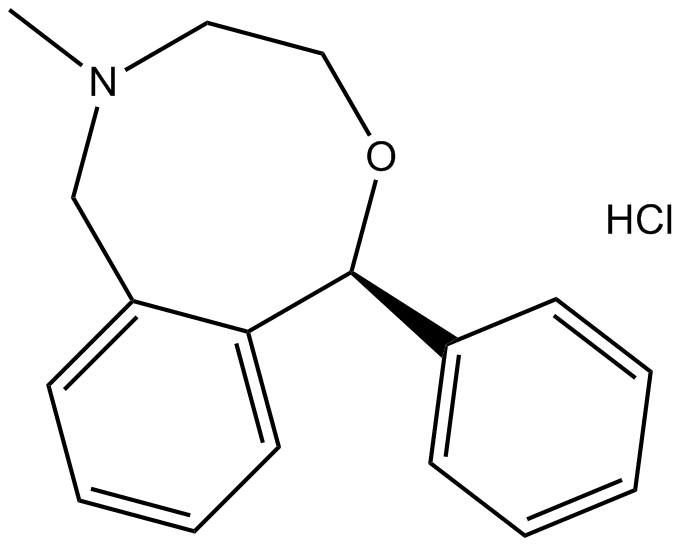
-
GC38522
Neurodazine
Small molecule inducer of neuronal differentiation
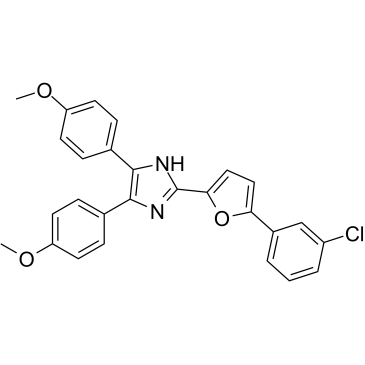
-
GC11454
Neurodazine
Induces neurogenesis of non-pluripotent C2C12 myoblasts
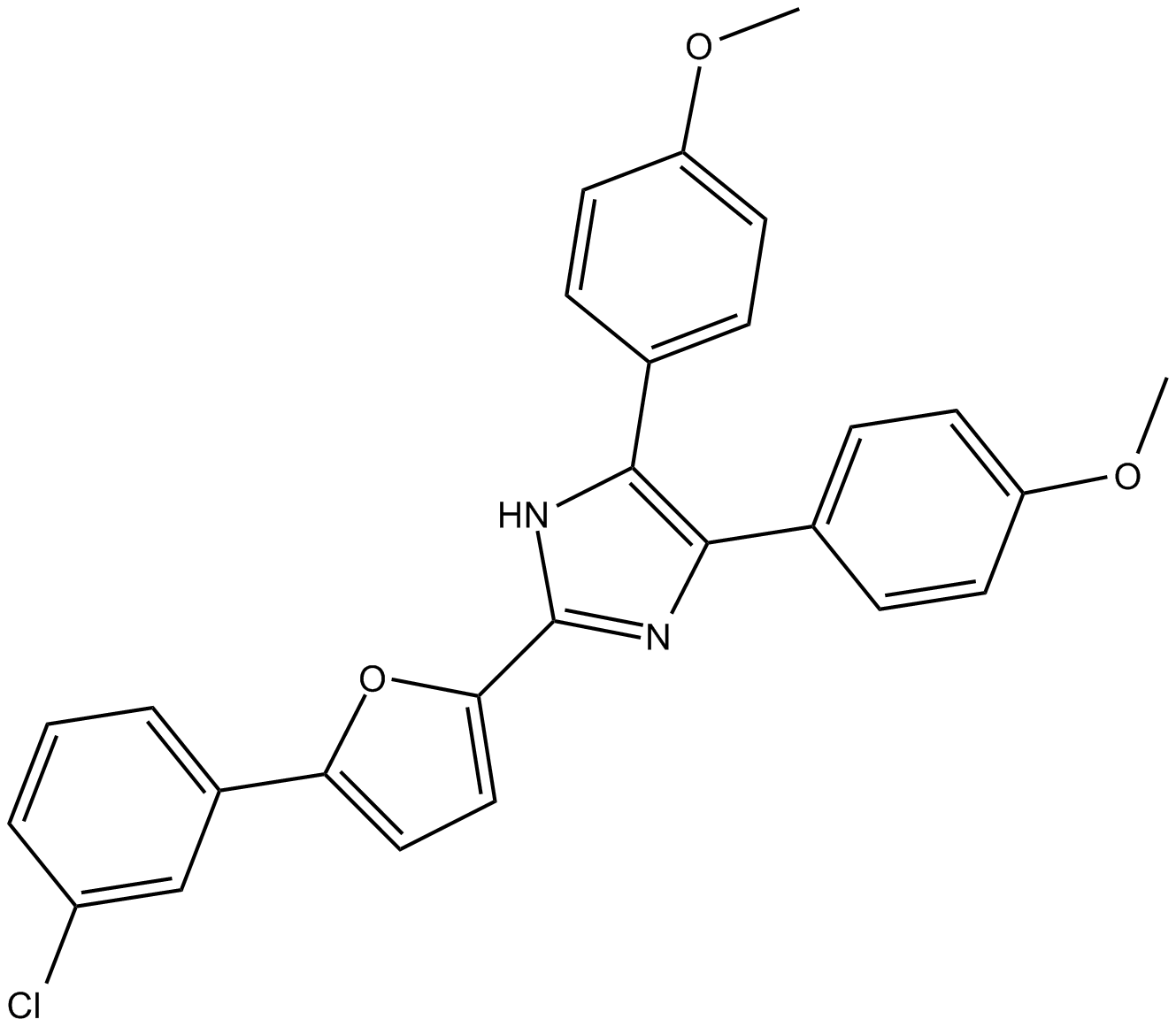
-
GC50489
NLS-StAx-h
Wnt signaling inhibitor; inhibits β-catenin-transcription factor interactions
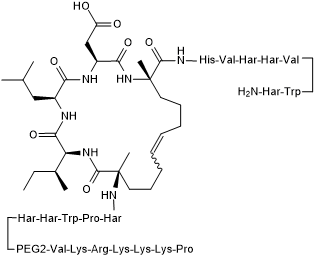
-
GC67737
NLS-StAx-h TFA

-
GC65916
NRX-103095
NRX-103095 is an enhancer of the interaction between β-catenin, and its cognate E3 ligase, SCFβ-TrCP. NRX-103095 enhances the binding of pSer33/Ser37 β-catenin peptide for β-TrCP with an EC50 of 163 nM.
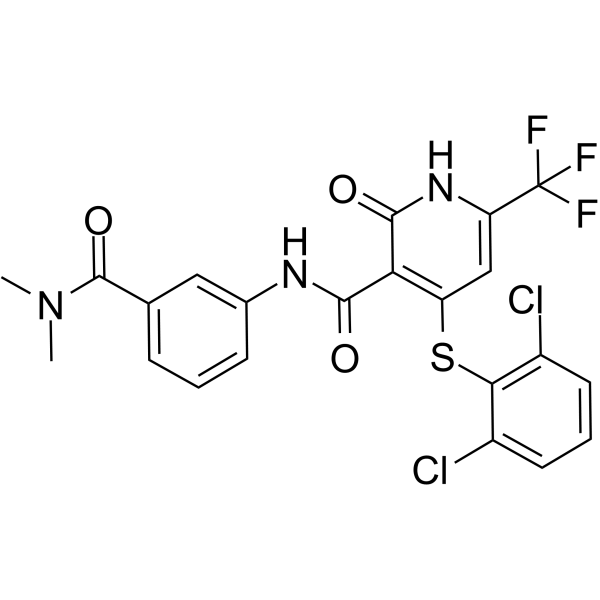
-
GC65919
NRX-252114
NRX-252114 is a potent enhancer of the interaction between β-catenin, and its cognate E3 ligase, SCFβ-TrCP. NRX-252114 enhances the binding of pSer33/S37A β-catenin peptide for β-TrCP with an EC50 of 6.5 nM and a Kd of 0.4 nM. NRX-252114 induces mutant β-catenin degradation.
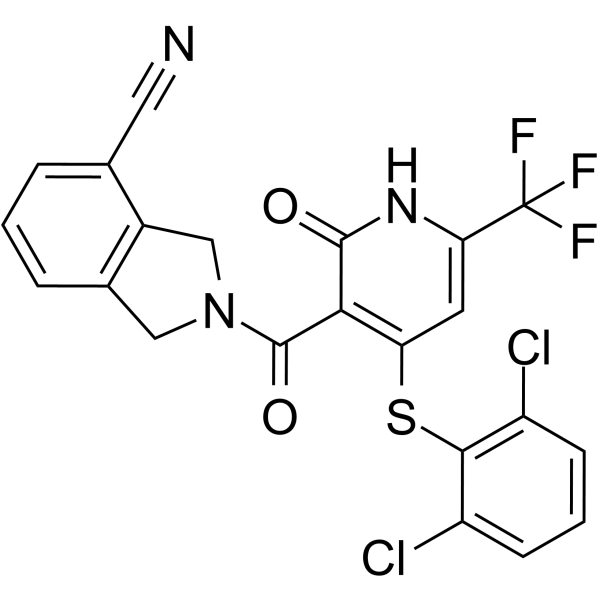
-
GC65336
NRX-252262
NRX-252262 is a potent enhancer of the interaction between β-Catenin, and its cognate E3 ligase, SCFβ-TrCP, induces mutant β-catenin degradation, with an EC50 of 3.8 nM.
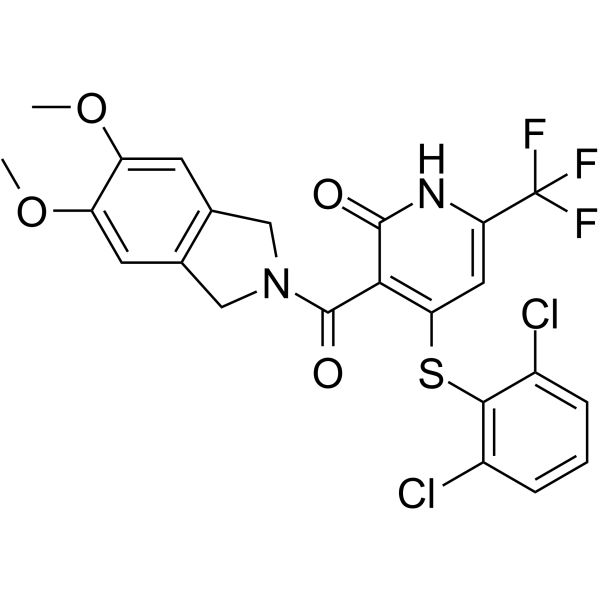
-
GC64832
NRX-2663
NRX-2663 is an enhancer of the interaction between β-catenin, and its cognate E3 ligase, SCFβ-TrCP. NRX-2663 enhances the binding of β-catenin peptide for β-TrCP with an EC50 of 22.9 ?M and a Kd of 54.8 nM.
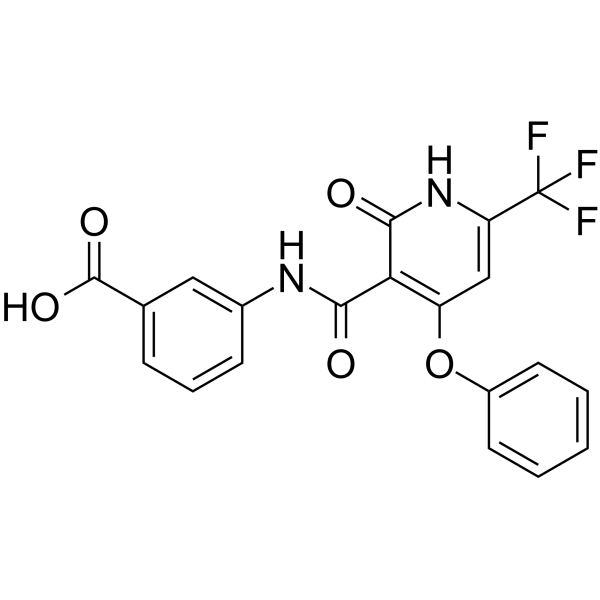
-
GC44467
NSC 668036
NSC 668036 is an inhibitor of the Dishevelled (Dvl) protein PDZ domain (Kd = 240 μM for mouse Dvl1 PDZ domain).

-
GC11115
Pamidronate
Pamidronate is a drug used to treat a broad spectrum of bone absorption diseases.
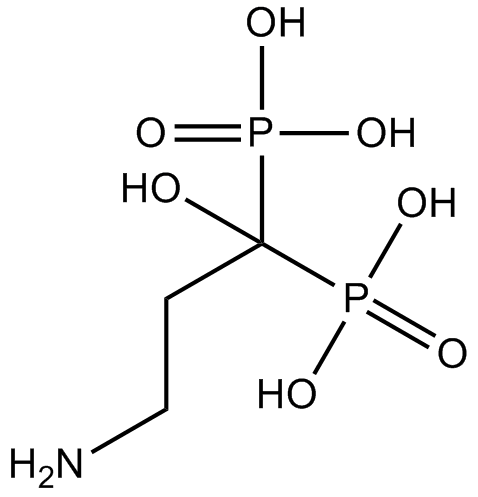
-
GC18291
PKF118-310
PKF118-310 (Xanthothricin) is an antagonist of transcription factor 4 (TCF4)/β-catenin complex, also acts as an inhibitor of KDM4A, with antitumor activity.
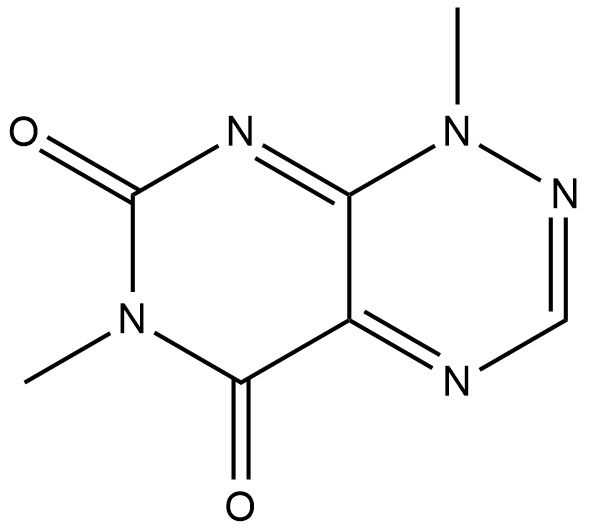
-
GC16711
PNU 74654
Wnt signaling pathway inhibitor
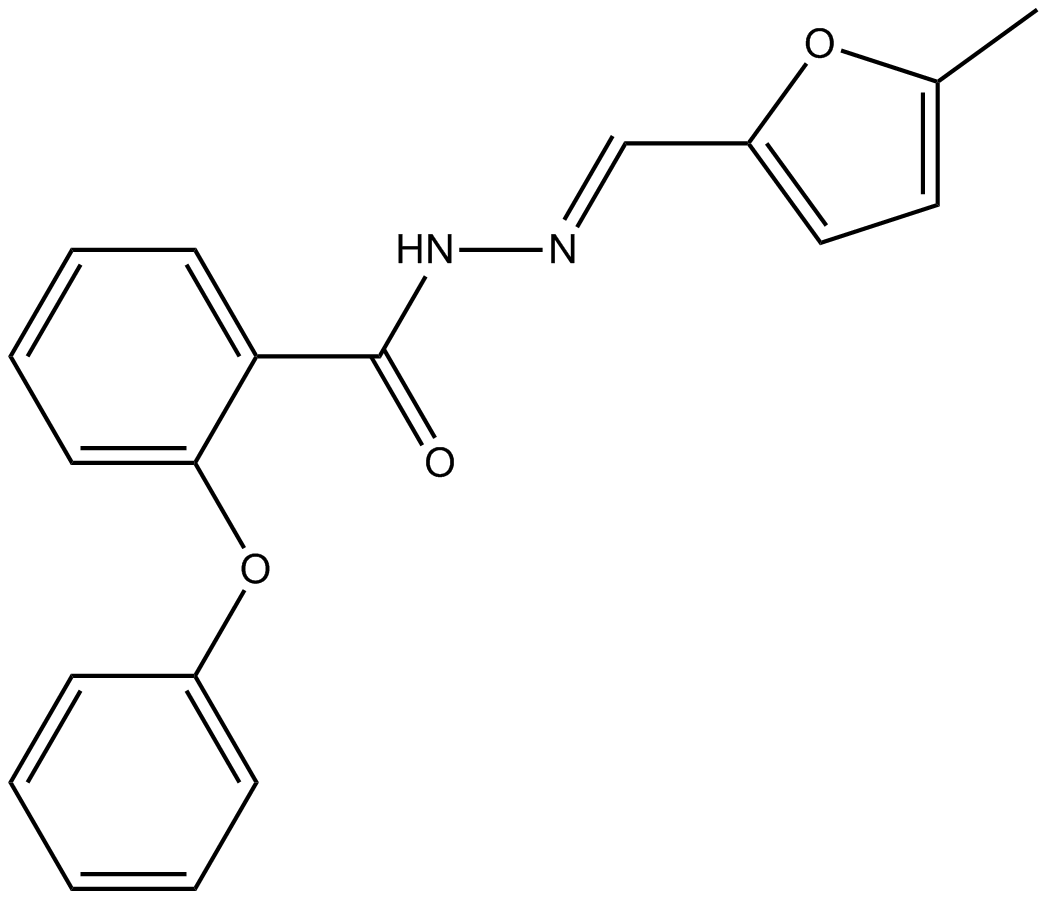
-
GC65066
Prodigiosin hydrochloride
Prodigiosin (Prodigiosine) hydrochloride is a red pigment produced by bacteria as a bioactive secondary metabolite.
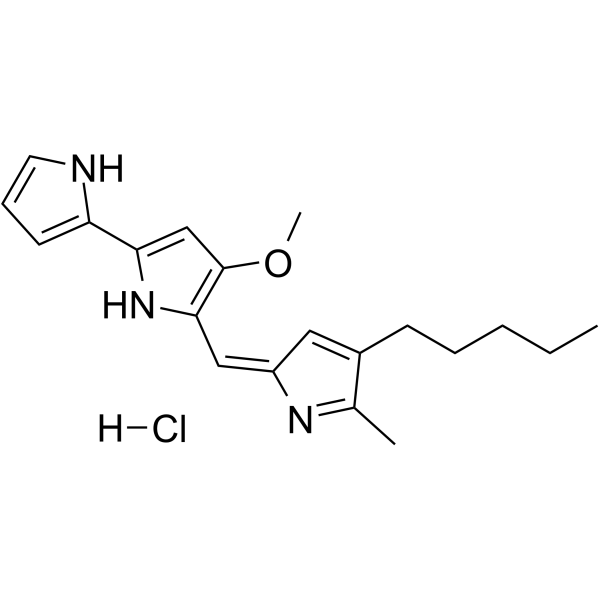
-
GC32698
Pyrvinium pamoate (Pyrvinium embonate)
Pyrvinium pamoate (Pyrvinium embonate) is an FDA-approved antihelmintic drug that inhibits WNT pathway signaling.
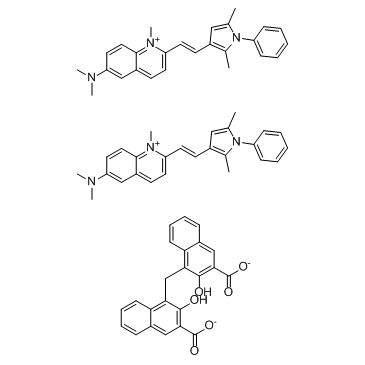
-
GC17251
QS 11
ARFGAP1 inhibitor,Wnt/beta-catenin pathway modulator
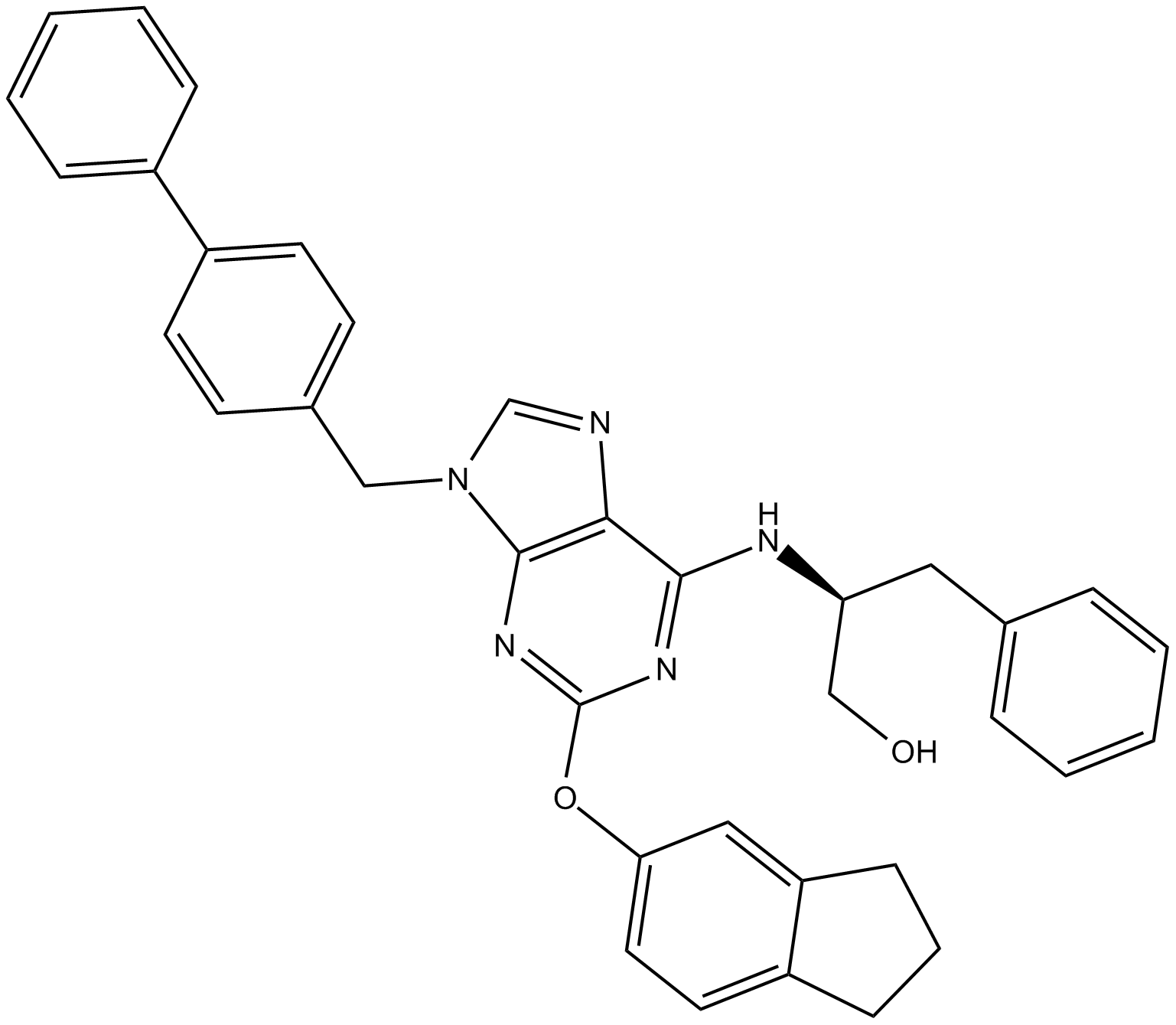
-
GC69802
RA-V
RA-V is a cyclic hexapeptide. RA-V has activity against Wnt, Myc and Notch with IC50 values of 50, 75 and 93 ng/mL respectively. RA-V can be used for research on cancer-related signaling pathways.
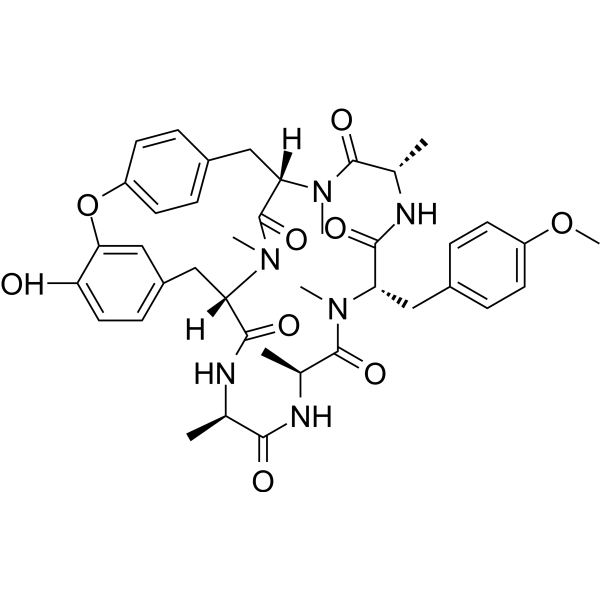
-
GC14882
Salinomycin
A selective cancer stem cell inhibitor
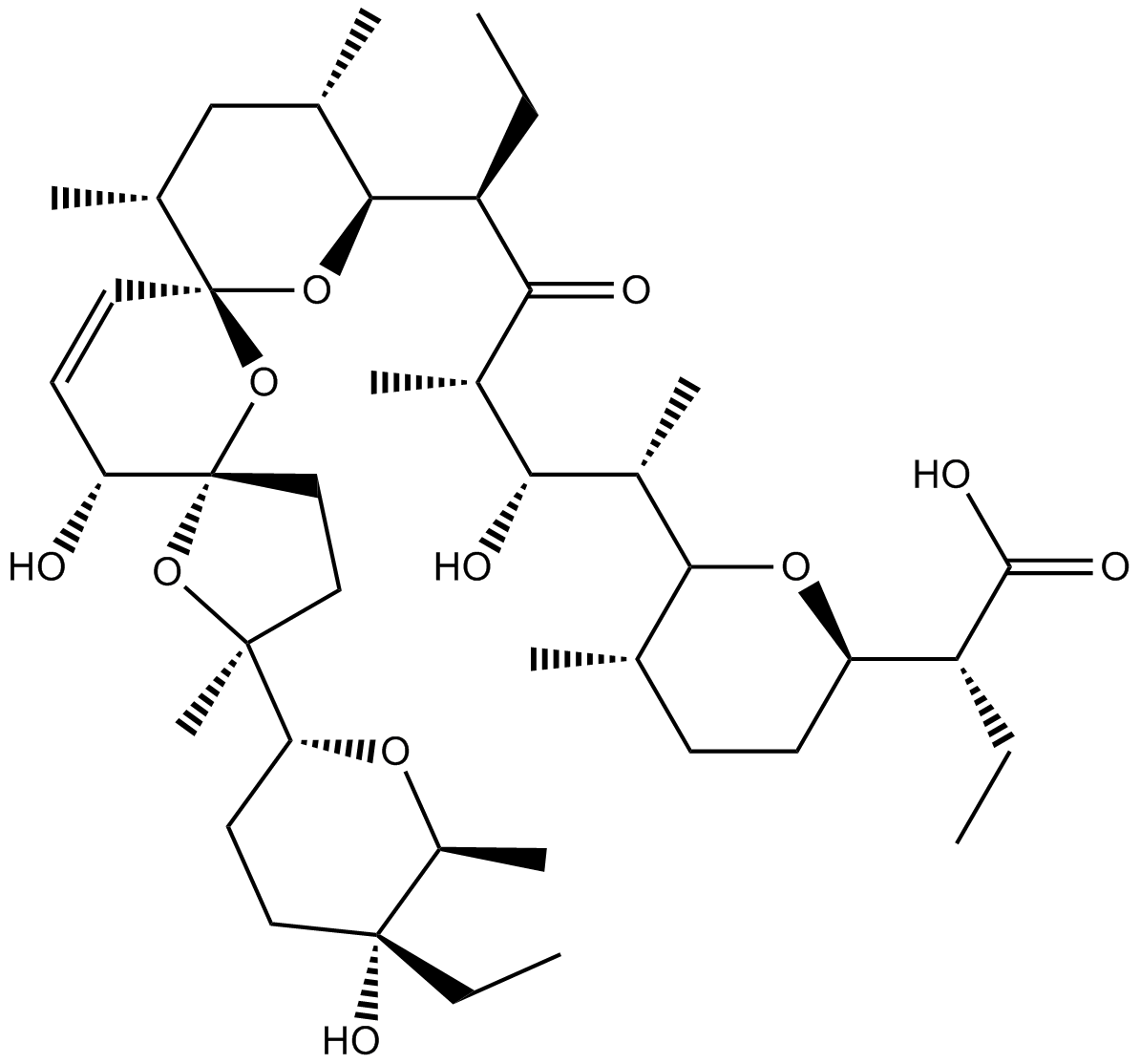
-
GC18107
Salinomycin sodium salt
A selective cancer stem cell inhibitor
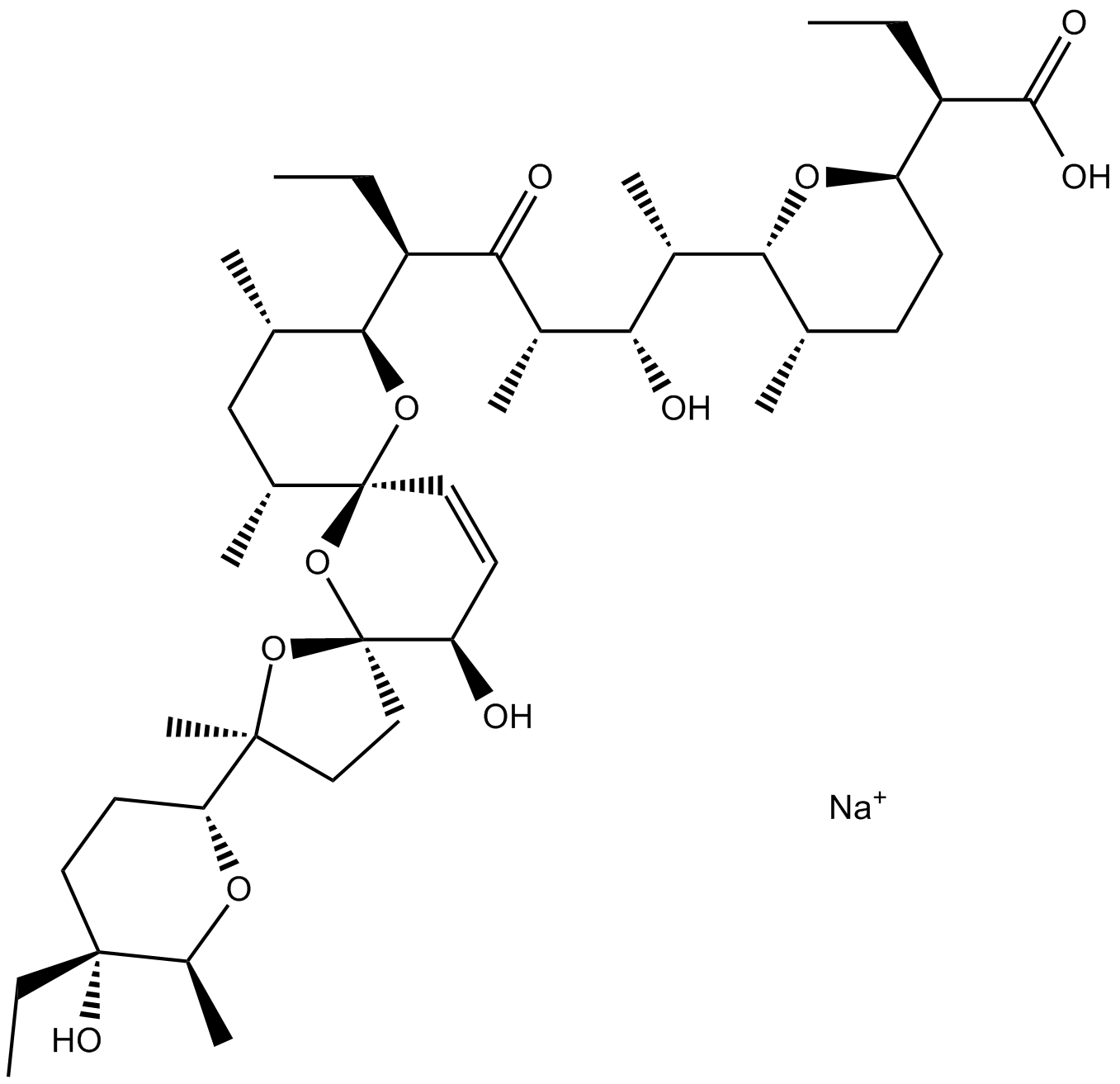
-
GC16320
Shz 1
induces phenotypic differentiation
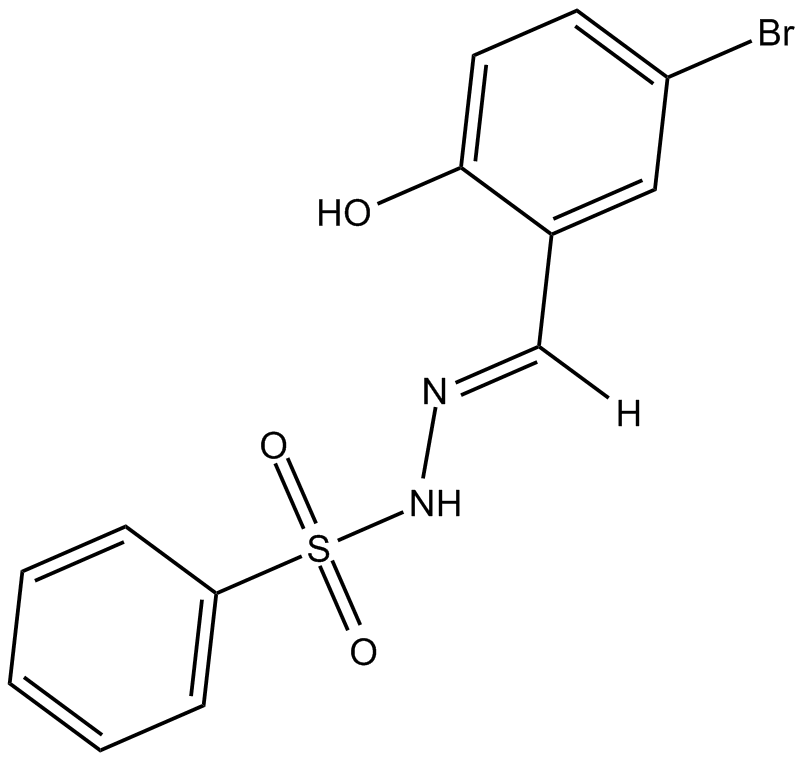
-
GC16701
SKI II
Sphingosine kinase(SK) inhibitor
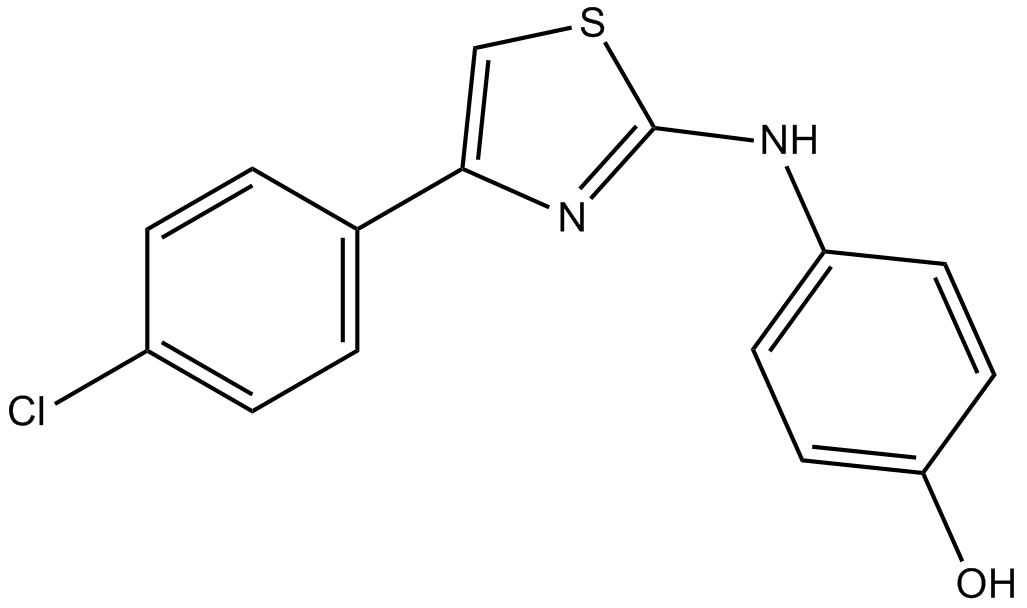
-
GC16382
SKL2001
An activator of Wnt/β-catenin signaling
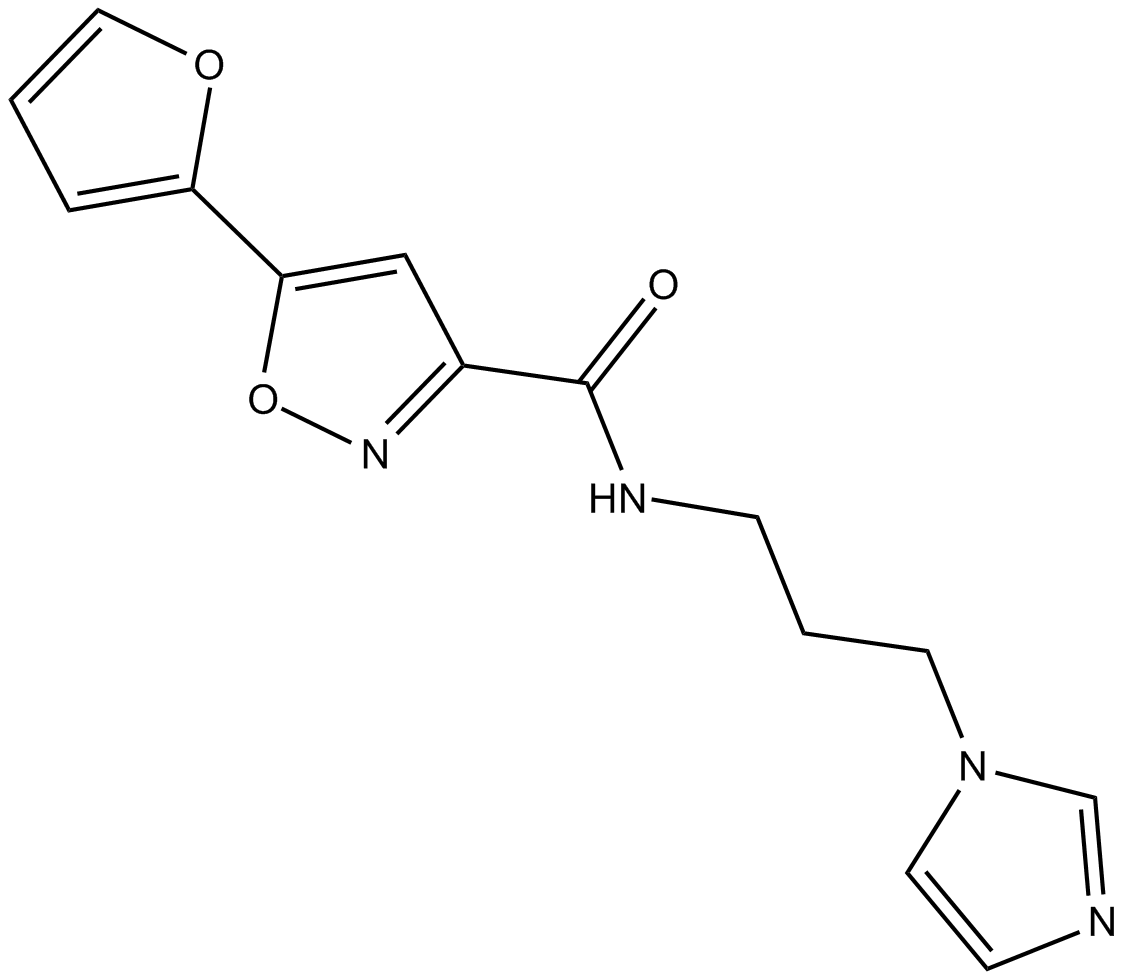
-
GC15041
Tankyrase Inhibitors (TNKS) 22
Tankyrase inhibitor
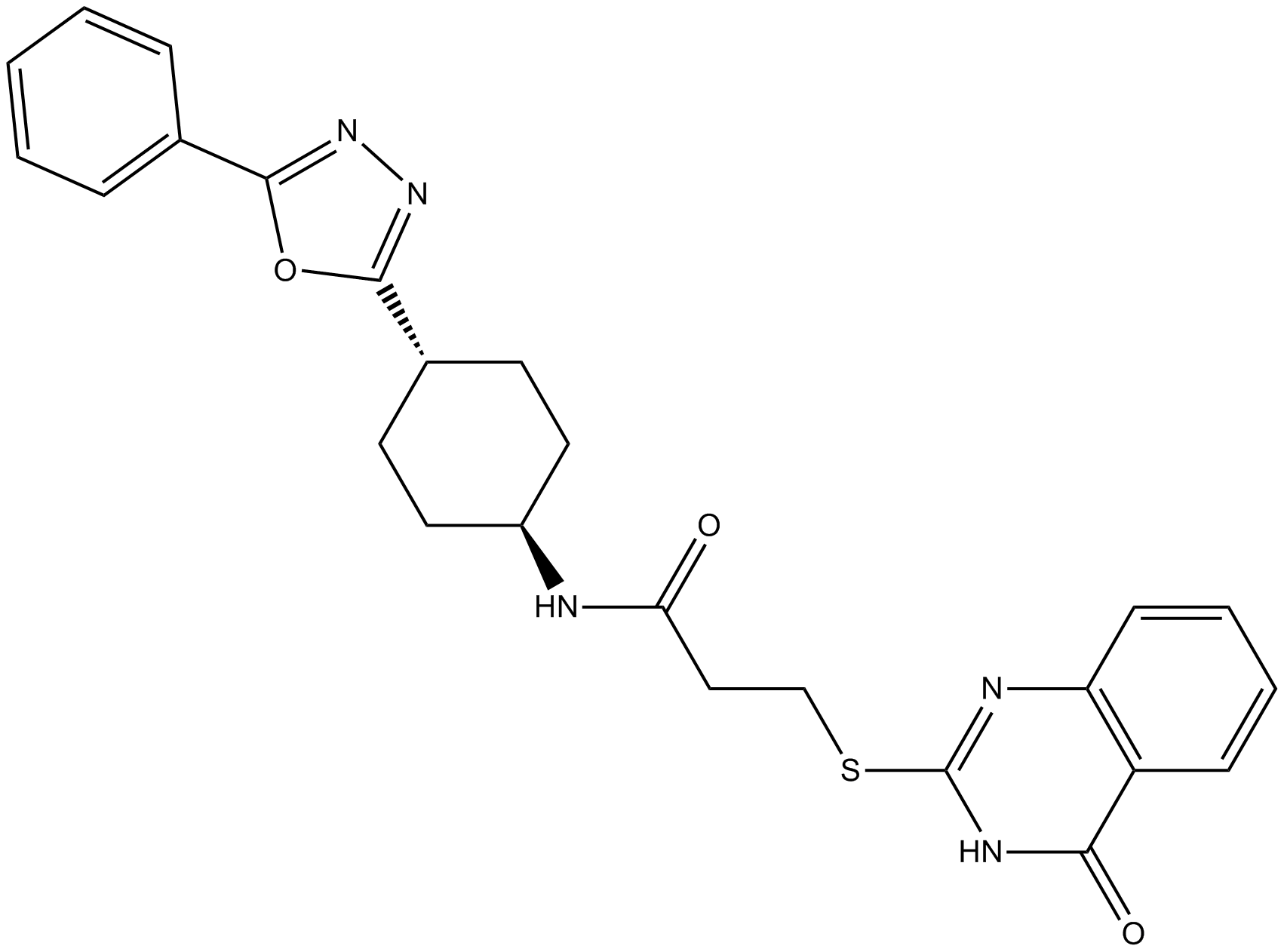
-
GC11548
Tankyrase Inhibitors (TNKS) 49
Tankyrase inhibitor
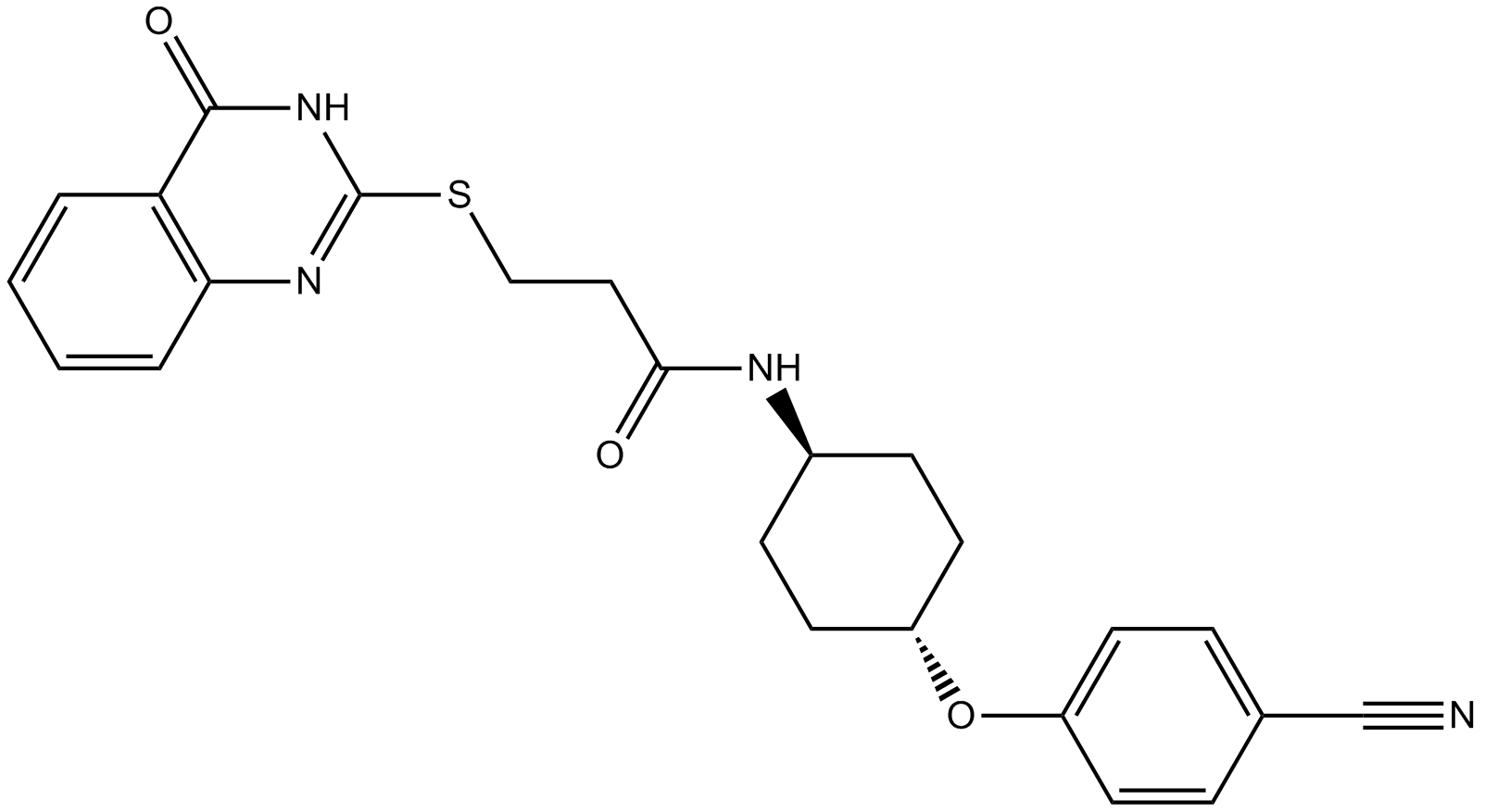
-
GC13301
TCS 2210
Inducer of neuronal differentiation in mesenchymal stem cells (MSCs)
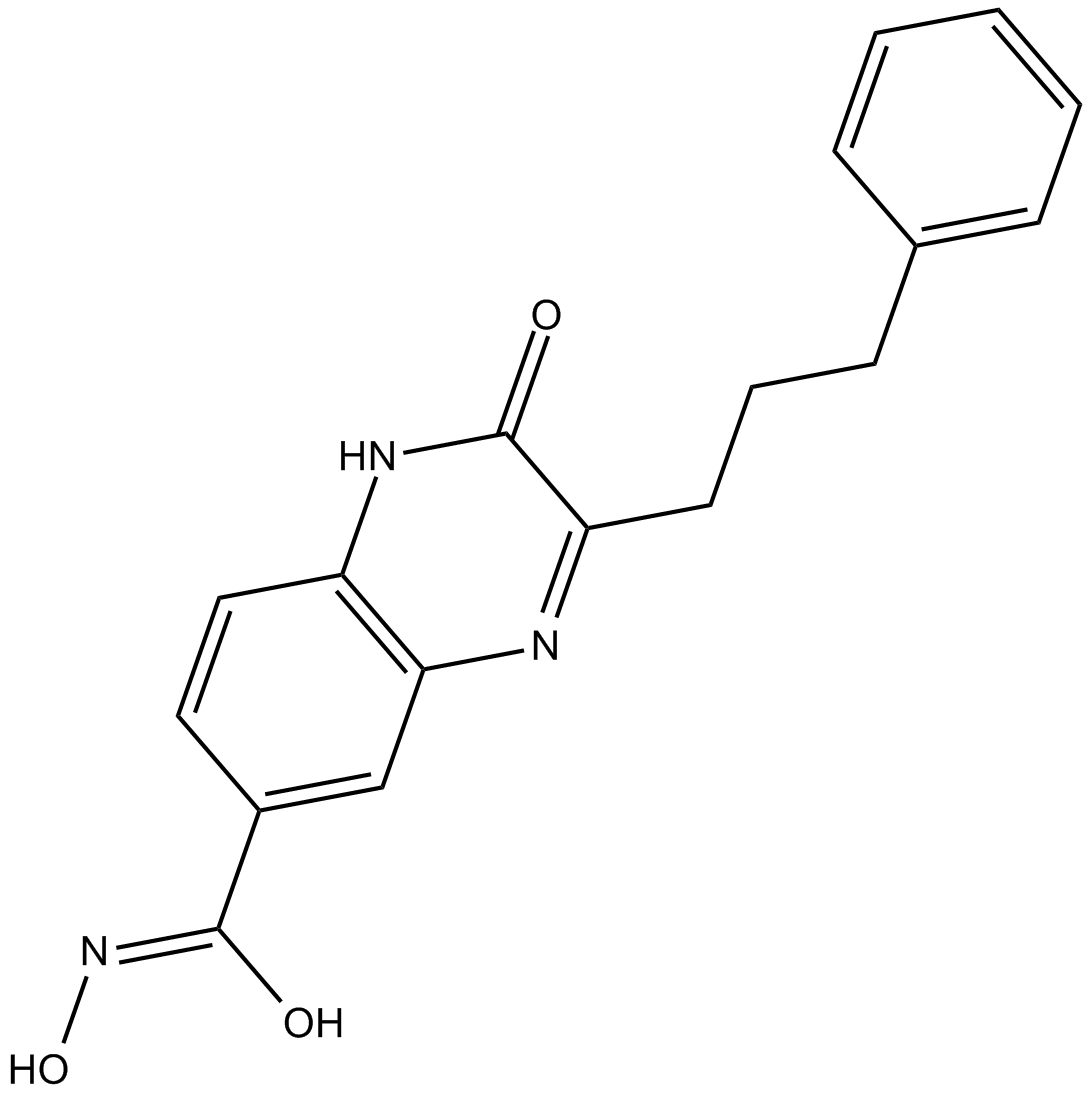
-
GC39159
Tegatrabetan
Tegatrabetan (BC2059) is a β-Catenin antagonist. Tegatrabetan disrupts the binding of β-catenin with the scaffold protein transducin β-like 1 (TBL1).
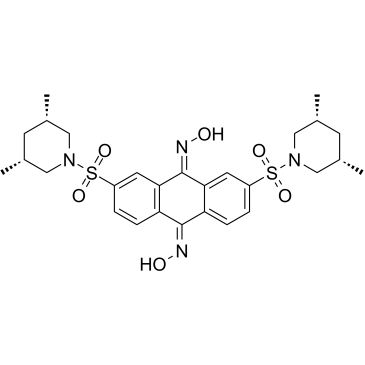
-
GC62394
Teplinovivint
Teplinovivint is a potent wnt/β-catenin signaling pathway inhibitor.
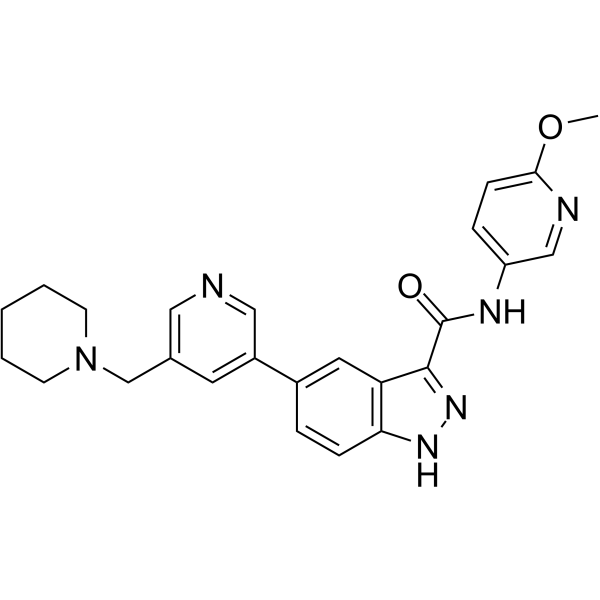
-
GC14037
Triptonide
A diterpenoid with diverse biological activities
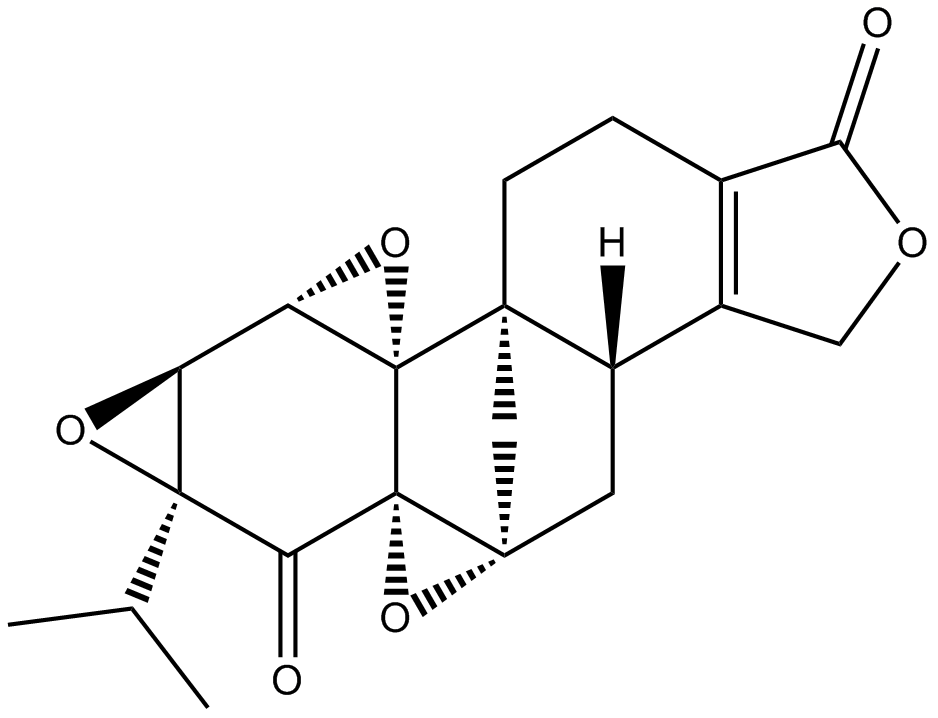
-
GC50077
WAY 316606 hydrochloride
Secreted Frizzled-related protein-1 (sFRP-1) inhibitor; increases Wnt signaling

-
GC15753
WAY-262611
β-Catenin agonist
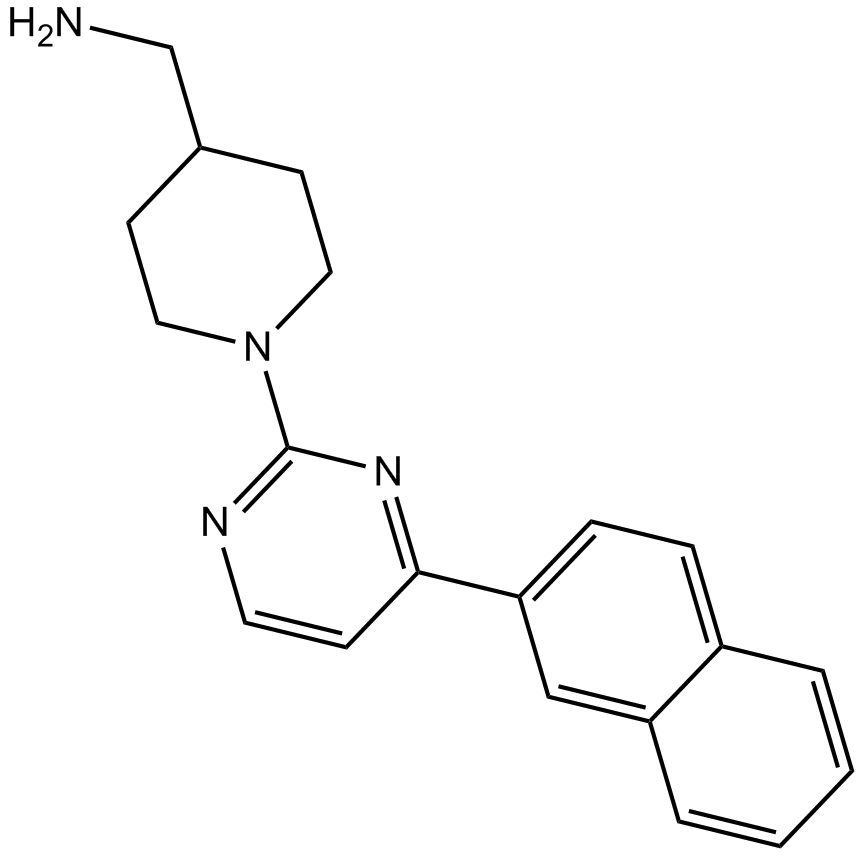
-
GC70143
WIC1
WIC1 is an effective Wnt inhibitor that can be used in cancer research.
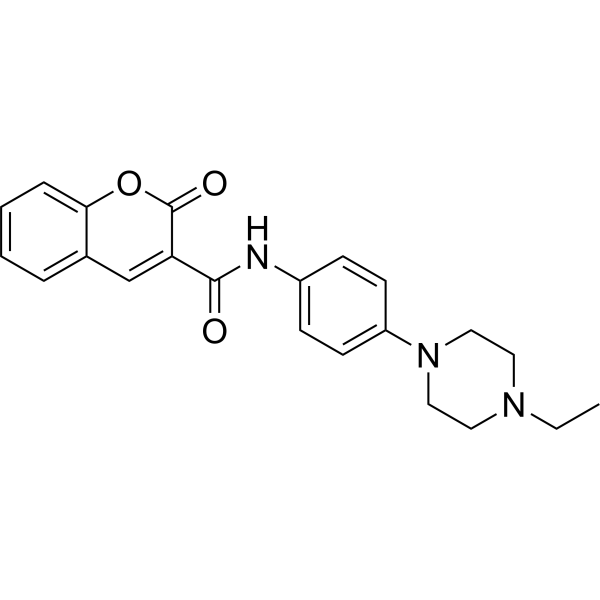
-
GC11674
WIKI4
A potent TNKS1/2 inhibitor
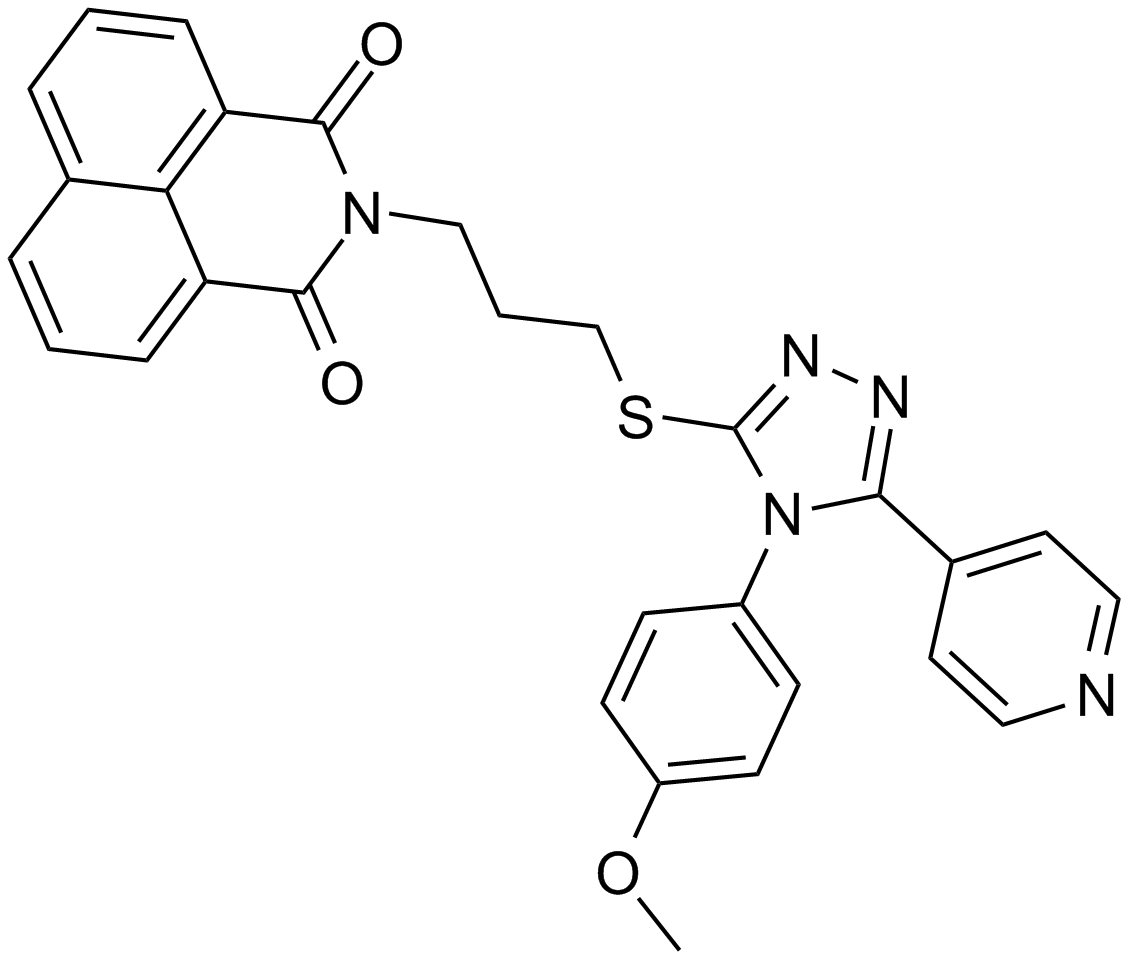
-
GC12133
Windorphen
Wnt inhibitor
